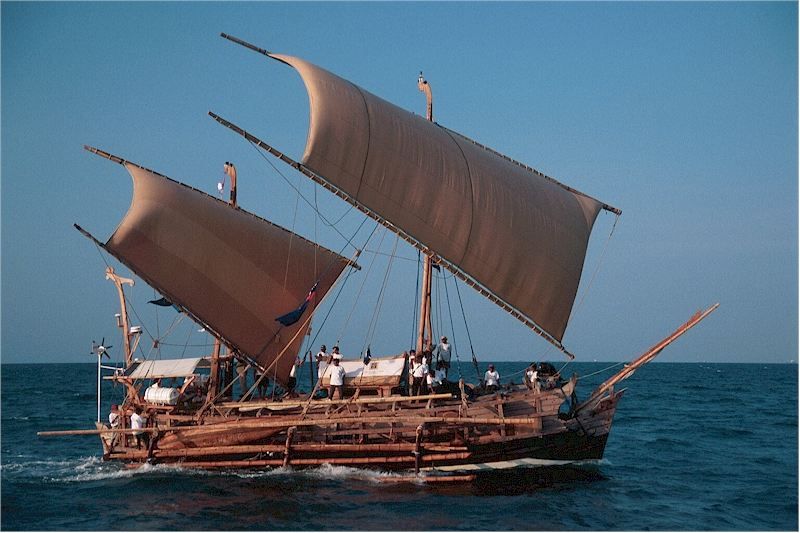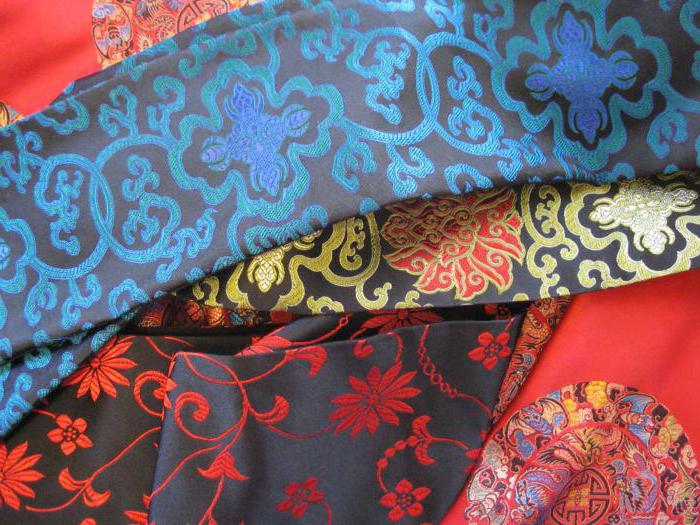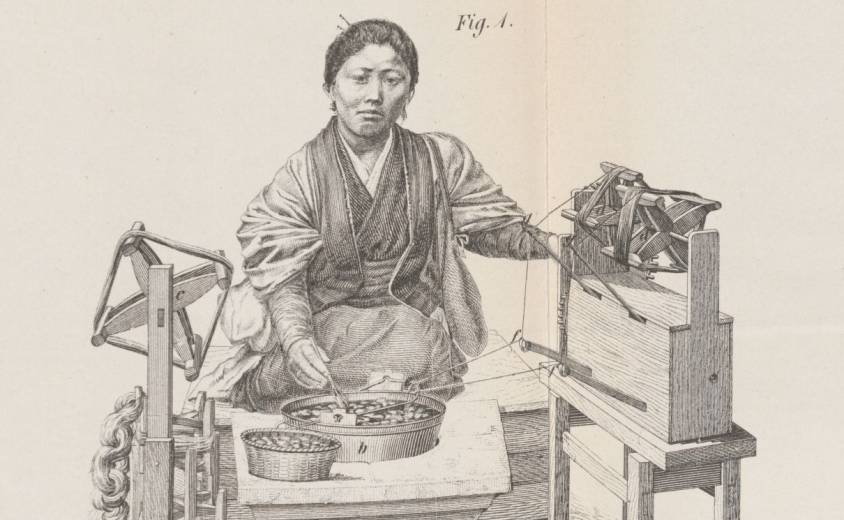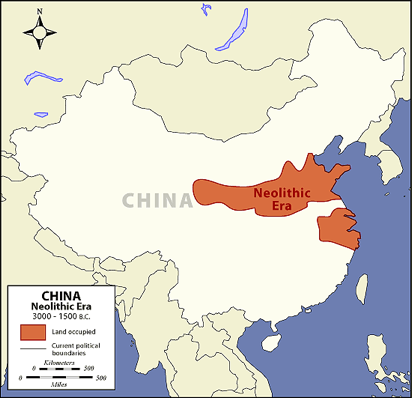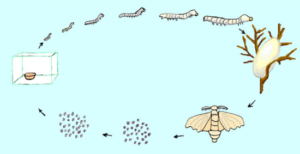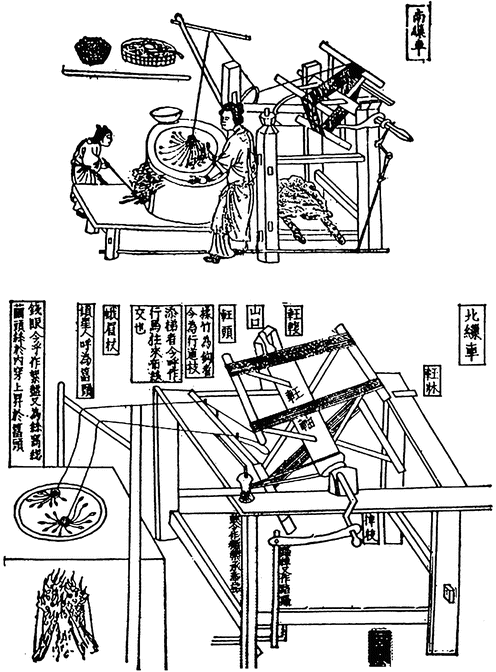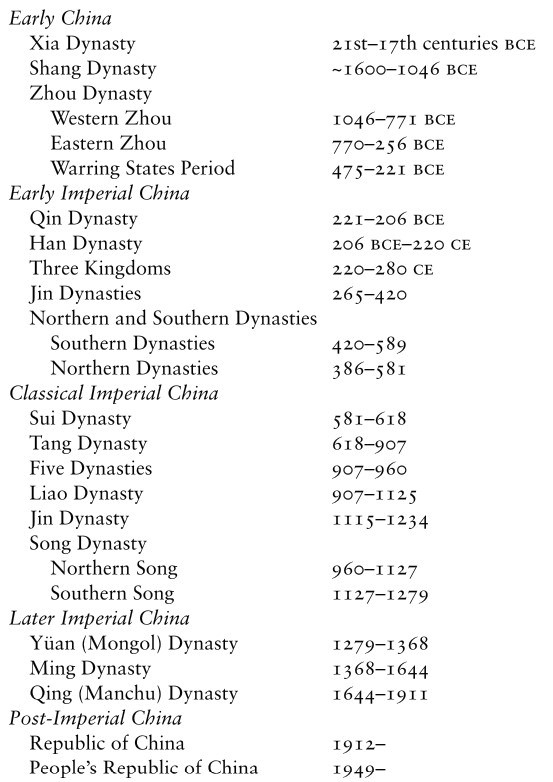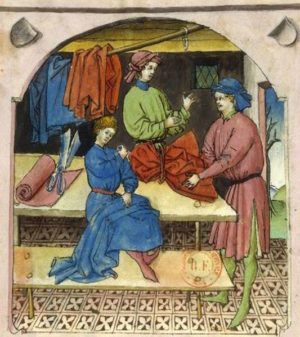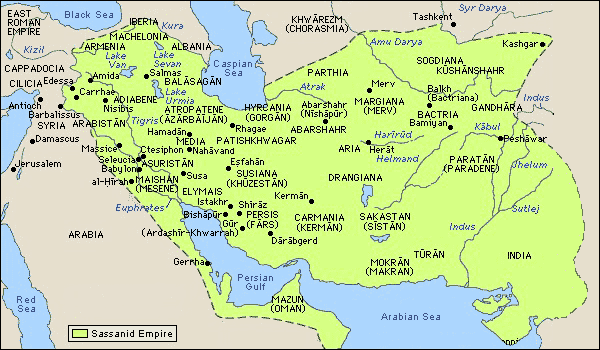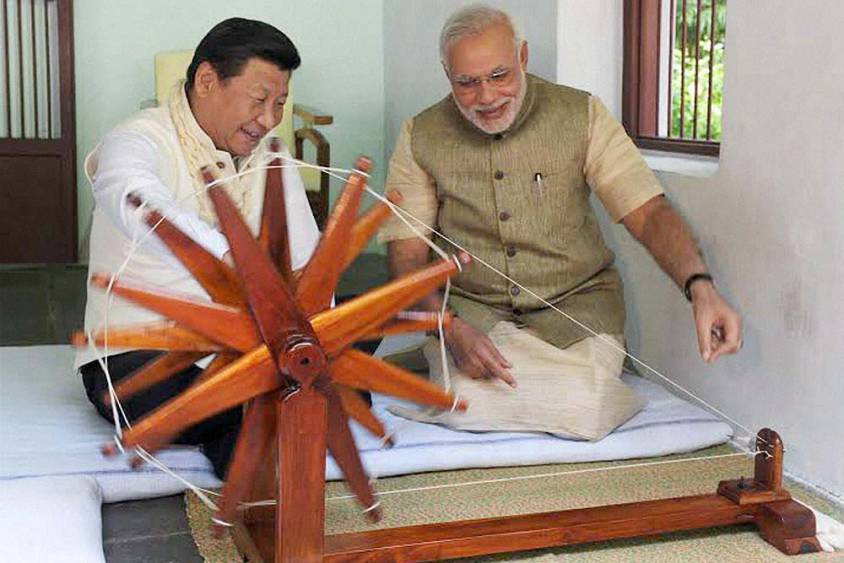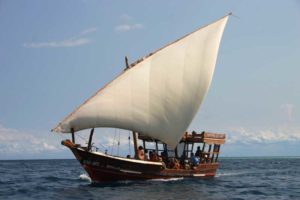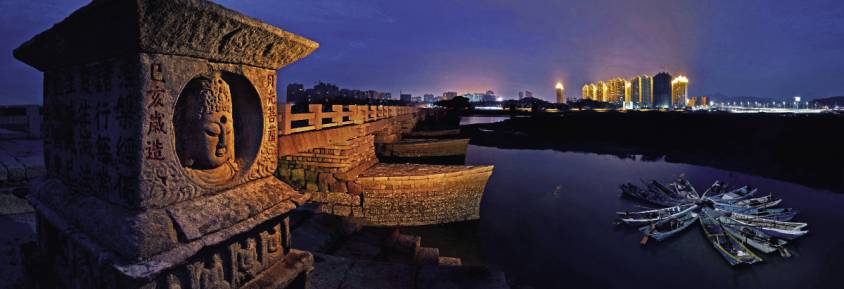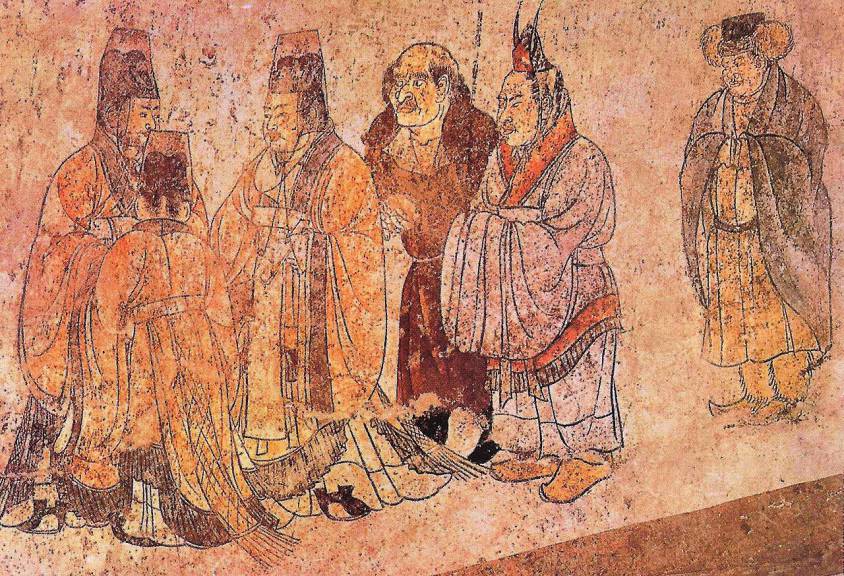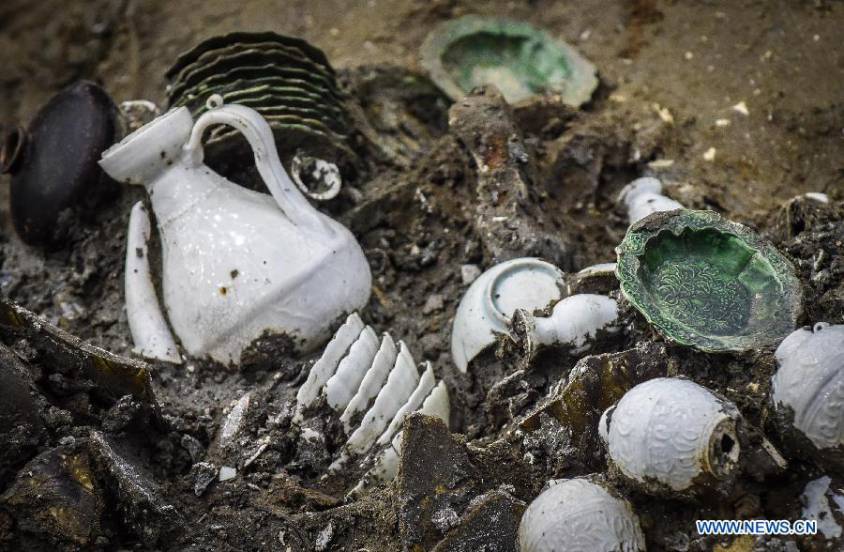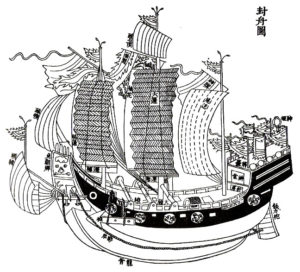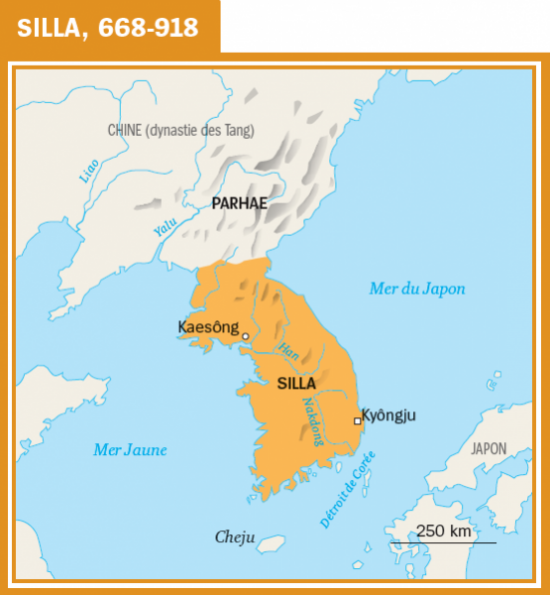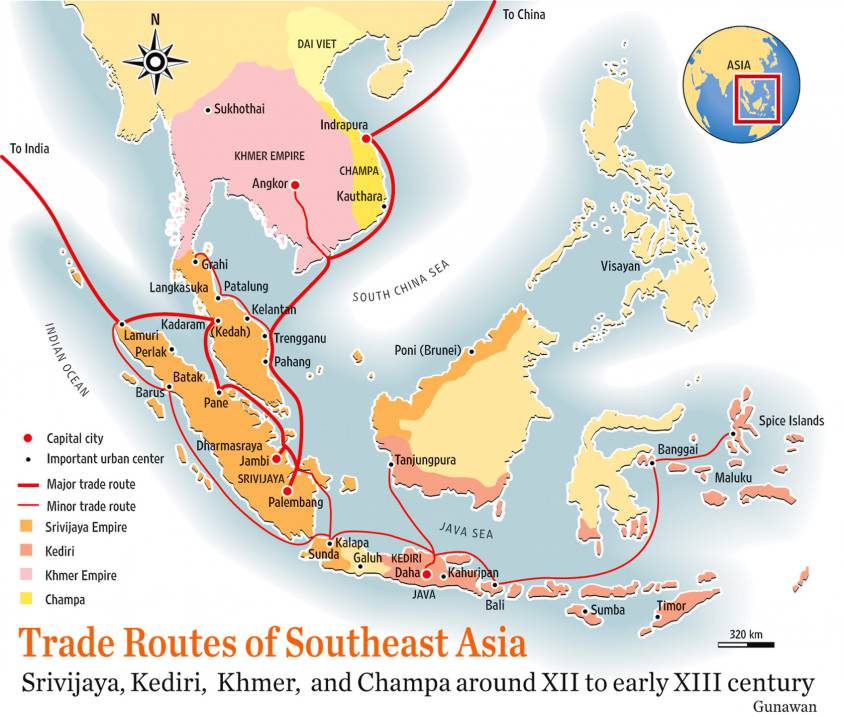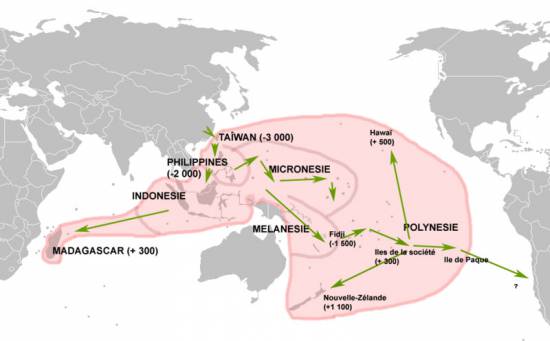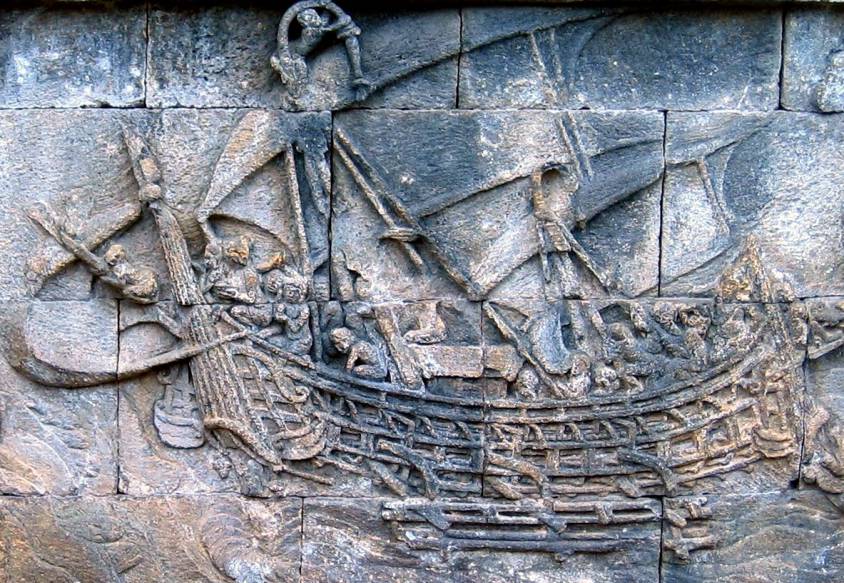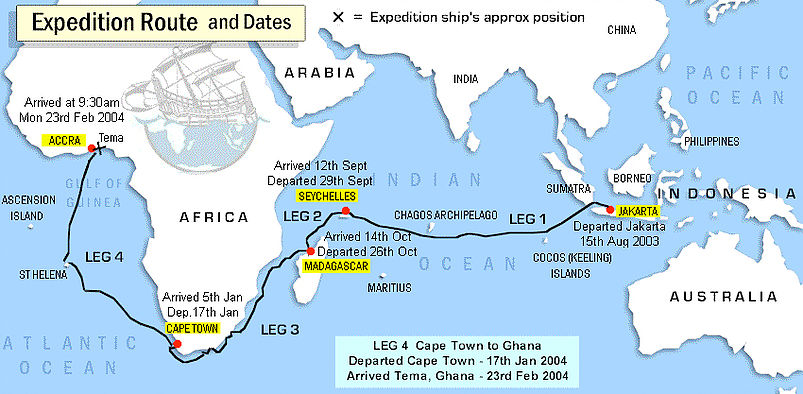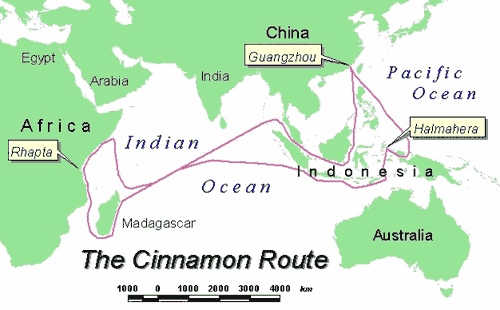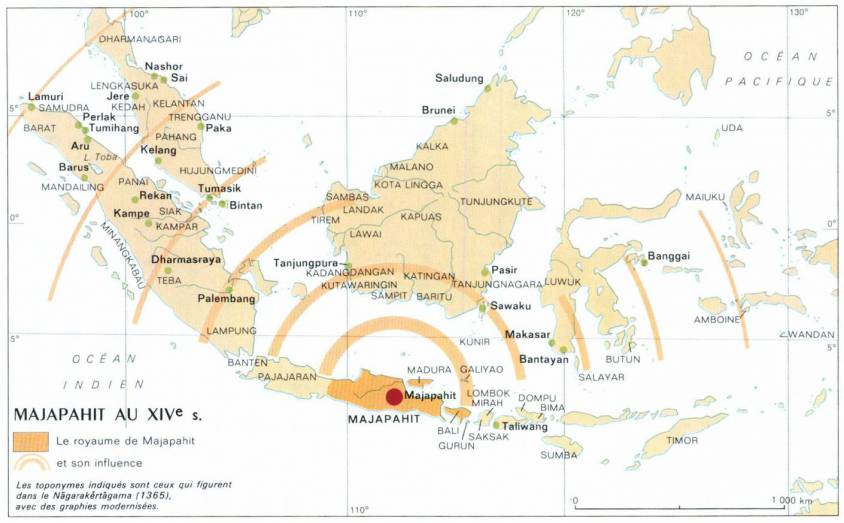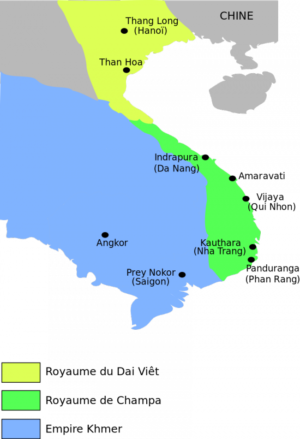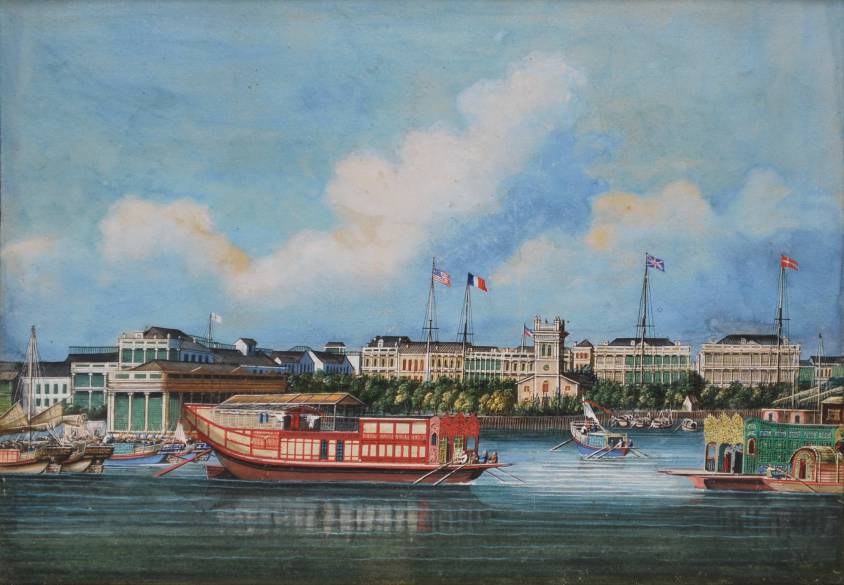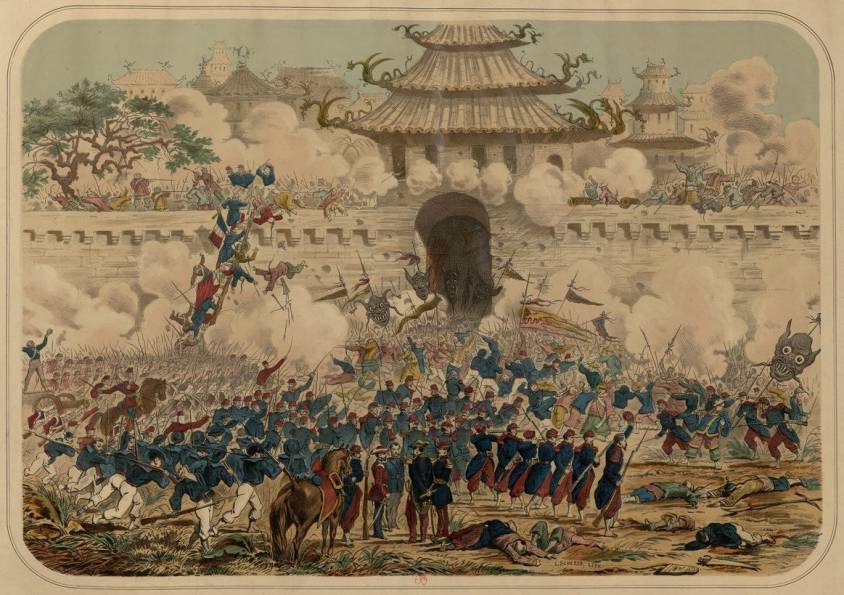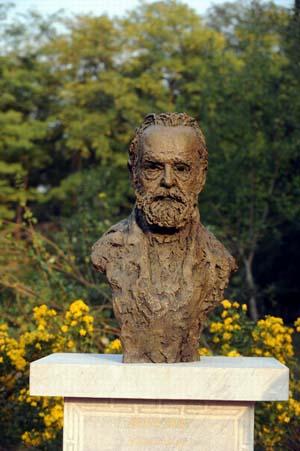Étiquette : Italy
How Jacques Cœur put an end to the Hundred Years’ War

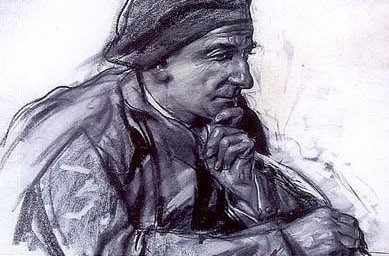
has much to inspire us today.
Without waiting for the end of the Hundred Years’ War (1337-1453), Jacques Cœur, an intelligent and energetic man of whom no portrait or treatise exists, decided to rebuild a ruined, occupied and tattered France.
Not only a merchant, but also a banker, land developer, shipowner, industrialist and master of mines in Forez, Jacques Coeur was a contemporary of Joan of Arc (1412-1431), who lived in 1429 in Coeur’s native city of Bourges.
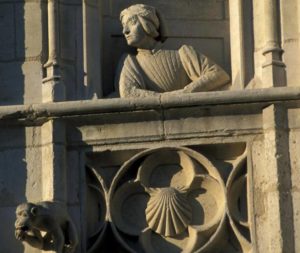
First and foremost, he entered into collaboration with some of the humanist popes of the Renaissance, patrons of the scientific genius Nicolaus Cusanus and the painter Piero della Francesca. With Europe threatened with implosion and chaos, their priority was to put an end to interminable warfare and unify Christendom.
Secondly, following in the footsteps of Saint-Louis (King Louis IX), Cœur was one of the first to fully assume France’s role as a naval power. Finally, thanks to an intelligent foreign exchange policy and by taking advantage of the maritime and overland Silk Roads of his time, he encouraged international trade. In Bruges, Lyon and Geneva, he traded silk and spices for cloth and herring, while investing in sericulture, shipbuilding, mining and steelmaking.
Paving the way for the reign of Louis XI, and long before Jean Bodin, Barthélémy de Laffemas, Sully and Jean-Baptiste Colbert, his mercantilism heralded the political economy concepts later perfected by the German-American economist Friedrich List or the first American Secretary of the Treasury, Alexander Hamilton.
We will concentrate here on his vision of man and economy, leaving aside important subjects such as the trial against him, his relationship with Agnès Sorel and Louis XI, to which many books have been dedicated.
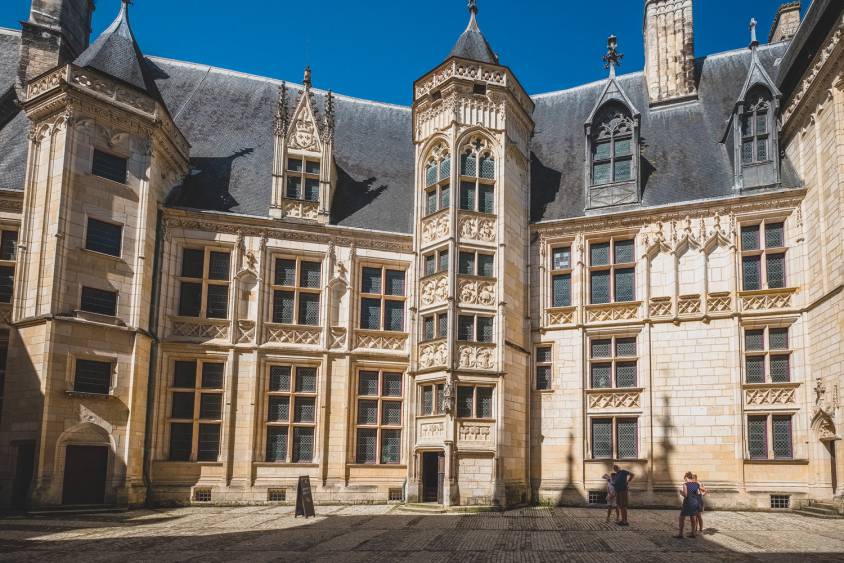
Jacques Cœur (1400-1454) was born in Bourges, where his father, Pierre Cœur, was a merchant pelletier. Of modest income, originating from Saint-Pourçain, he married the widow of a butcher, which greatly improved his status, as the butchers’ guild was particularly powerful.
The Hundred Years’ War

The early XVth century was not a particularly happy time. The « Hundred Years’ War » pitted the Armagnacs against the Burgundians allied with England. As with the great systemic bankruptcy of the papal bankers in 1347, farmland was plundered or left fallow.
While urbanization had thrived thanks to a productive rural world, the latter was deserted by farmers, who joined the hungry hordes populating towns lacking water, hygiene and the means to support themselves. Epidemics and plagues became the order of the day; cutthroats, skinners, twirlers and other brigands spread terror and made real economic life impossible.
Jacques Cœur was fifteen years old when one of the French army’s most bitter defeats took place in France. The battle of Agincourt (1415) (Pas-de-Calais), where French chivalry was routed by outnumbered English soldiers, marked the end of the age of chivalry and the beginning of the supremacy of ranged weapons (bows, crossbows, early firearms, etc.) over melee (hand-to-hand combat). A large part of the aristocracy was decimated, and an essential part of the territory fell to the English. (see map)
King Charles VII

In 1418, the Dauphin, the future Charles VII (1403-1461), as he is known thanks to a painting by the painter Jean Fouquet, escaped capture when Paris was taken by the Burgundians. He took refuge in Bourges, where he proclaimed himself regent of the kingdom of France, given the unavailability of his insane father (King Charles VI), who had remained in Paris and fallen to the power of John the Fearless, Duke of Burgundy.
The dauphin probably instigated the latter’s assassination on the Montereau bridge on September 10, 1419. By his ennemies, he was derisively nicknamed « the little King of Bourges ». The presence of the Court gave the city a boost as a center of trade and commerce.
Considered one of the most industrious and ingenious of men, Jacques Coeur married in 1420 Macée de Léodepart, daughter of a former valet to the Duke of Berry, who had become provost of Bourges.
As his mother-in-law was the daughter of a master of the mints, Jacques Coeur’s marriage in 1427 left him, along with two partners, in charge of one of the city’s twelve exchange offices. His position gave rise to much jealousy. After being accused of not respecting the quantity of precious metal contained in the coins he produced, he was arrested and sentenced in 1428, but soon benefited from a royal pardon.
Yolande d’Aragon
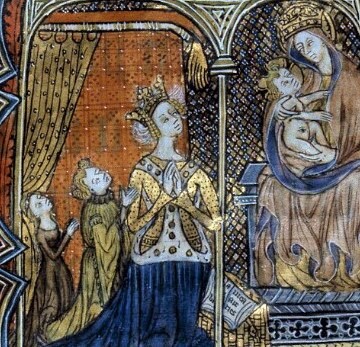
Although the Treaty of Troyes (1420) disinherited the dauphin from the kingdom of France in favor of a younger member of the House of Plantagenets, Charles VII nonetheless proclaimed himself King of France on his father’s death on October 21, 1422.
The de facto leader of the Armagnac party, retreating south of the Loire, saw his legitimacy and military situation considerably improved thanks to the intervention of Joan of Arc (1412-1431), operating under the benevolent protection of an exceptional world-historic person: the dauphin’s mother-in-law Yolande of Aragon (1384-1442), Duchess of Anjou, Queen of Sicily and Naples (Note 1).
Backed and guided by Yolande, Jeanne helped lift the siege of Orléans and had Charles VII crowned King of France in Reims in July 1429. In the mean time Yolande d’Aragon established contacts with the Burgundians in preparation for peace, and picked Jacques Coeur to be part of the Royal Court (Note 2).
The contemporary chronicler Jean Juvenal des Ursins (1433–44), Bishop of Beauvais described Yolande as « the prettiest woman in the kingdom. » Bourdigné, chronicler of the house of Anjou, says of her: « She who was said to be the wisest and most beautiful princess in Christendom. » Later, King Louis XI of France recalled that his grandmother had « a man’s heart in a woman’s body. »
A twentieth-century French author, Jehanne d’Orliac wrote one of the few works specifically on Yolande, and noted that the duchess remains unappreciated for her genius and influence in the reign of Charles VII. « She is mentioned in passing because she is the pivot of all important events for forty-two years in France », while « Joan [of Arc] was in the public eye only eleven months. »
Journey to the Levant
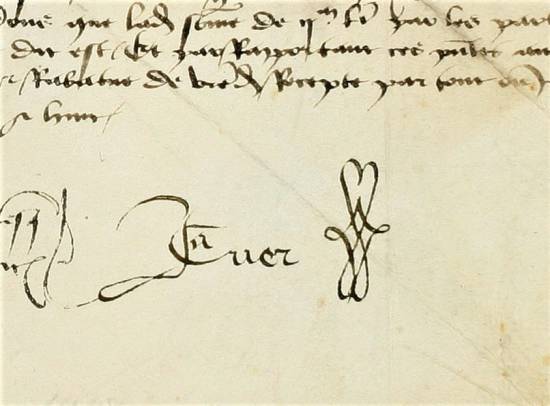
In 1430, Jacques Cœur, already renowned as a man « full of industry and high gear, subtle in understanding and high in comprehension; and all things, no matter how high, knowing how to lead by his work » (Note N° 3), with Barthélémy and Pierre Godard, two Bourges notables, set up,
« a company for all types of merchandise, especially for the King our lord, my lord the Dauphin and other lords, and for all other things for which they could provide proof ».
In 1431, Joan of Arc was handed over to the English by the Burgundians and burned alive at the stake in Rouen. One year later, in 1432, Jacques Cœur went to the Levant. A diplomat and humanist, Cœur went as an observer of customs as well as economic and political life.
His ship coasted from port to port, skirting the Italian coast as closely as possible, before rounding Sicily and arriving in Alexandria, Egypt. At the time, Alexandria was an imposing city of 70,000 inhabitants, bustling with thousands of Syrian, Cypriot, Genoese, Florentine and Venetian ships.
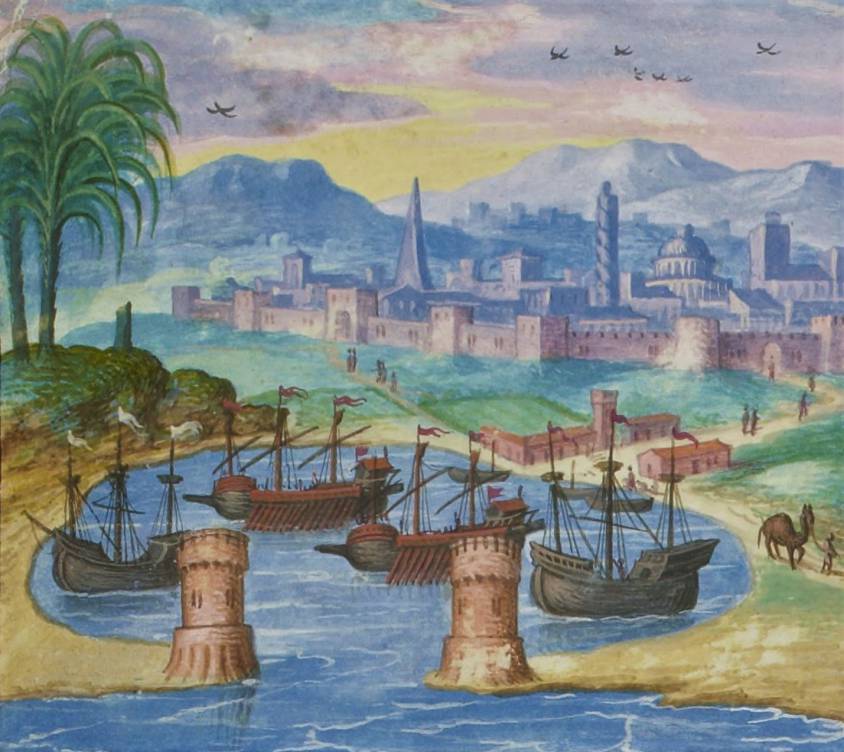
In Cairo, he discovered treasures arriving from China, Africa and India via the Red Sea. Around the Sultan’s Palace, Armenian, Georgian, Greek, Ethiopian and Nubian merchants offered precious stones, perfumes, silks and carpets. The banks of the Nile were planted with sugar cane and the warehouses full of sugar and spices.
Selling Silver at the Price of Gold
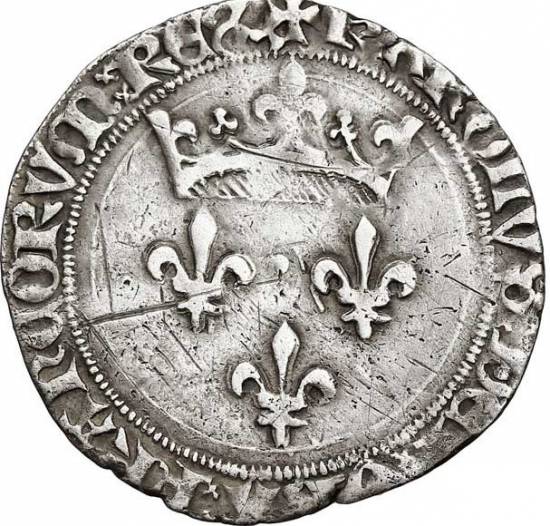
To understand Jacques Coeur’s financial strategy, a few words about bimetallism. At the time, unlike in China, paper money was not widely used. In the West, everything was paid for in metal coins, and above all in gold.
According to Herodotus, Croesus issued silver and pure gold coins in the 6th century BC. Under the Roman Empire, this practice continued. However, while gold was scarce in the West, silver-lead mines were flourishing.
Added to this, in the Middle Ages, Europe saw a considerable increase in the quantities of silver coinage in circulation, thanks to new mines discovered in Bohemia. The problem was that in France, national production was not sufficient to satisfy the needs of the domestic market. As a result, France was obliged to use its gold to buy what was lacking abroad, thus driving gold out of the country.
According to historians, during his trip to Egypt, Coeur observed that the women there dressed in the finest linens and wore shoes adorned with pearls or gold jewels. What’s more, they loved what was fashionable elsewhere, especially in Europe. Coeur was also aware of the existence of poorly exploited silver and copper mines in the Lyonnais region and elsewhere in France.
Historian George Bordonove, in his book Jacques Coeur, trésorier de Charles VII (Jacques Coeur, treasurer of Charles VII), reckons that Coeur was quick to note that the Egyptians « strangely preferred silver to gold, bartering silver for equal weight ». whereas in Europe, the exchange rate was 15 volumes of silver for one volume of gold !
In other words, he realized that the region « abounded in gold », and that the price of silver was very advantageous. The opportunity to enrich his country by obtaining a « golden » price for the silver and copper extracted from the French mines must have seemed obvious to him
What’s more, in China, only payments in silver were accepted. In other words, the Arab-Muslim world had gold, but lacked silver for its trade with the Far East, hence its huge interest in acquiring it from Europe…
Lebanon, Syria and Cyprus
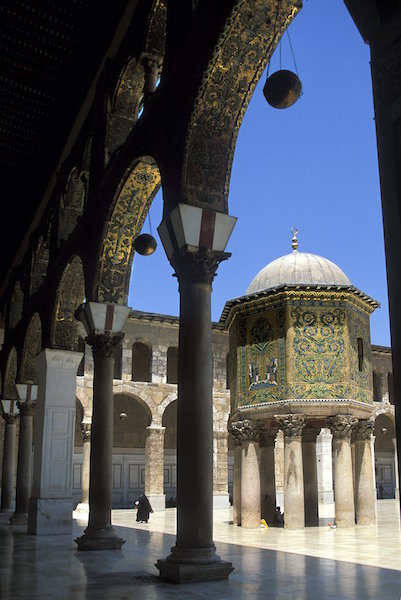
Cœur then travels via Beirut to Damascus in Syria, at the time by far the biggest center of trade between East and West.
The city is renowned for its silk damasks, light gauze veils, jams and rose essences. Oriental fabrics were very popular for luxury garments.
Europe was supplied with silk and gold muslin from Mosul, damasks with woven motifs from Persia or Damascus, silks decorated with baldacchino figures, sheets with red or black backgrounds adorned with blue and gold birds from Antioch, and so on.
The « Silk Road » also brought Persian carpets and ceramics from Asia. The journey continues to another of the Silk Roads’ great maritime warehouses: Cyprus, an island whose copper had offered exceptional prosperity to the Minoan, Mycenaean and Phoenician civilizations.
The best of the West was bartered here for indigo, silk and spices.
Genoa and Venice

During his voyage, Coeur also discovered the maritime empires of Venice and Genoa, each enjoying the protection of a Vatican dependent on these financial powers.
The former, to justify their lucrative trade with the Muslims, claimed that « before being Christian », they were Venetians…
Like the British Empire, the Venetians promoted total free trade to subjugate their victims, while applying fierce dirigisme at home and prohibitive taxes to others. Any artist or person divulging Venetian know-how suffered terrible consequences.
Venice, outpost of the Byzantine Empire and supplier to the Court of Constantinople, a city of several million inhabitants, developed fabric dyeing, manufactured silks, velvets, glassware and leather goods, not to mention weapons. Its arsenal employs 16,000 workers.

Its rival, Genoa, with its highly skilled sailors and cutting-edge financial techniques, had colonized the Bosphorus and the Black Sea, from where treasures from Persia and Muscovy flowed. They also shamelessly engaged in the slave trade, a practice they would pass on to the Spanish and especially the Portuguese, who held a monopoly on trade with Africa.
Avoiding direct confrontation with such powers, Cœur kept a low profile. The difficulty was threefold: following the war, France was short of everything! It had no cash, no production, no weapons, no ships, no infrastructure!
So much so, in fact, that Europe’s main trade route had shifted eastwards. Instead of taking the route of the Rhône and Saône rivers, merchants passed through Geneva, and up the Rhine to Antwerp and Bruges. Another difficulty was soon added: a royal decree prohibited the export of precious metals! But what immense profits the Kingdom could draw from the operation.
The Oecumenial Councils

On his return from the Levant, France’s history accelerated. While preparing the economic reforms he wanted, Jacques Cœur also became involved in the major issues of the day. Through his brother Nicolas Cœur, the future bishop of Luçon, he played an important role in the process initiated by the humanists to unify the Western Church in the face of the Turkish threat.
Since 1378, there had been two popes, one in Rome and the other in Avignon. Several councils attempted to overcome the divisions. Nicolas Cœur attended them. First there was the Council of Constance (1414 to 1448), followed by the Council of Basel (1431), which, after a number of interruptions, was transferred to Florence (1439), establishing a doctrinal « union » between the Eastern and Western churches with a decree read out in Greek and Latin on July 6, 1439, in the cathedral of Santa Maria del Fiore, i.e. under the dome of Florence’s dome, built by Brunelleschi.

The central panel of the Ghent polyptych (1432), painted by the diplomatic painter Jan Van Eyck on the theme of the Lam Gods (the Lamb of God or Mystic Lamb), symbolizes the sacrifice of the Son of God for the redemption of mankind, and is capable of reuniting a church torn apart by internal differences. Hence the presence, on the right, of the three popes, here united before the Lamb. Van Eyck also painted portraits of Cardinal Niccolo Albergati, one of the instigators of the Council of Florence, and Chancellor Rolin, one of the architects of the Peace of Arras in 1435.
The Peace treaty of Arras
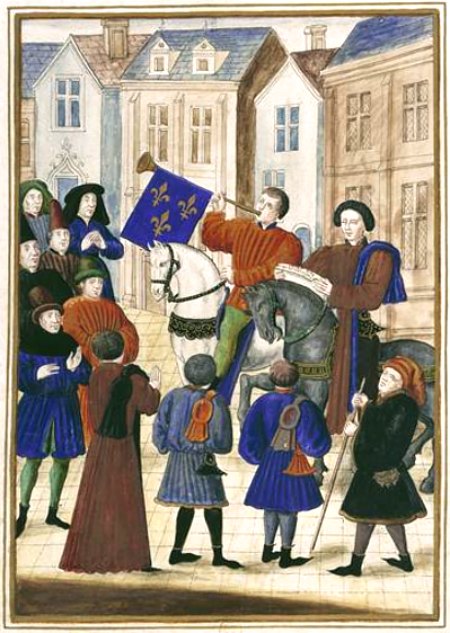
To achieve this, the humanists concentrated on France. First, they were to awaken Charles VII. After the victories won by Joan of Arc, wasn’t it time to win back the territories lost to the English?
However, Charles VII knew that peace with the English depended on reconciliation with the Burgundians. He therefore entered into negotiations with Philip the Good, Duke of Burgundy.
The latter no longer expected anything from the English, and wished to devote himself to the development of his provinces. For him, peace with France was a necessity. He therefore agreed to treat with Charles VII, paving the way for the Arras Conference in 1435.
This was the first European peace conference. In addition to the Kingdom of France, whose delegation was led by the Duke of Bourbon, Marshal de La Fayette and Constable Arthur de Richemont, and Burgundy, led by the Duke of Burgundy himself and Chancellor Rolin, it brought together Emperor Sigismund of Luxembourg, Mediator Amédée VIII of Savoy, an English delegation, and representatives of the kings of Poland, Castile and Aragon.
Although the English left the talks before the end, thanks to the skill of the scholar Aeneas Silvius Piccolomini, at that cardinal of Cyprus (and futur Pope Pius II) and spokesman for the Council of Basel, the signing of the Treaty of Arras in 1435 led to a peace agreement between the Armagnacs and the Burgundians, the first step towards ending the Hundred Years’ War.
In the meantime, the Council of Basel, which had opened in 1431, dragged on but came to nothing, and on September 18, 1437, Pope Eugene IV, advised by cardinal philosopher Nicolaus Cusanus and arguing the need to hold a council of union with the Orthodox, transferred the Council from Basel to Ferrara and then Florence. Only the schismatic prelates remained in Basel. Furious, they « suspended » Eugene IV and named the Duke of Savoy, Amédée VIII, Felix V, as the new pope. This « anti-pope » won little political support. Germany remained neutral, and in France, Charles VII confined himself to implementing many of the reforms decreed in Basel by the Pragmatic Sanction of Bourges on July 13, 1438.
King’s Treasurer and Great State Servant
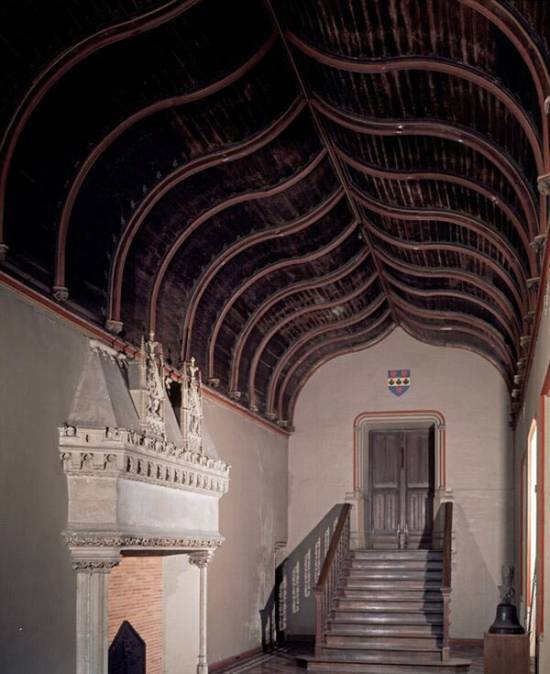
In 1438, Cœur became Argentier de l’Hôtel du roi. L’Argenterie was not concerned with the kingdom’s finances. Rather, it was a sort of commissary responsible for meeting all the needs of the sovereign, his servants and the Court, for their daily lives, clothing, armament, armor, furs, fabrics, horses and so on.
Cœur was to supply the Court with everything that could neither be found nor manufactured at home, but which he could bring in from Alexandria, Damascus and Beirut, at the time major nodal points of the Silk Road by land and sea, where he set up his commercial agents, his « facteurs » (manufacturers).
Following this, in 1439, after having been appointed Master of the Mint of Bourges, Jacques Cœur became Master of the Mint in Paris, and finally, in 1439, the King’s moneyer. His role was to ensure the sovereign’s day-to-day expenses, which involved making advances to the Treasury and controlling the Court’s supply channels.
Then, in 1441, the King appointed him commissioner of the Languedoc States to levy taxes. Cœur often imposed taxes without ever undermining the productive reconstruction process. And in times of extreme difficulty, he would even lend money, at low, long-term rates, to those who had to pay it.
Ennobled, Coeur became the King’s strategic advisor in 1442. He acquired a plot of land in the center of Bourges to build his « grant’maison », currently the Palais Jacques Coeur. This magnificent edifice, with fireplaces in every room and an oven supplying the rest and bath room with hot water, has survived the centuries, although Coeur rarely had the occasion to live there.
Coeur is a true grand state servitor, with broad powers to collect taxes and negotiate political and economic agreements on behalf of the king. Having reached the top, Coeur is now in the ideal position to expand his long-cherished project.
Rule over Finance
On September 25, 1443, the Grande Ordonnance de Saumur, promulgated at Jacques Coeur’s instigation, put the state’s finances on a sounder footing.
As Claude Poulain recounts in his biography of Jacques Coeur:
« In 1444, after affirming the fundamental principle that the King alone had the right to levy taxes, but that his own finances should not be confused with those of the kingdom, a set of measures was enacted that affected the French at every level. »
These included: « Commoners owning noble fiefs were obliged to pay indemnities; nobles who had received seigneuries previously belonging to the royal domain would henceforth be obliged to share in the State’s expenses, on pain, once again, of seizure; finally, the kingdom’s financial services were organized, headed by a budget committee made up of high-ranking civil servants, ‘Messieurs des Finances’. »
In clear, the nobility was henceforth obliged to pay taxes for the Common Good of the Nation !
The King’s Council of 1444, headed by Dunois, was composed almost exclusively, not of noblement but of commoners (Jacques Coeur, Jean Bureau, Étienne Chevalier, Guillaume Cousinot, Jouvenel des Ursins, Guillaume d’Estouteville, Tancarville, Blainville, Beauvau and Marshal Machet). France recovered and enjoyed prosperity.
If France’s finances recovered, besides « taxing the rich », it was above all thanks to strategic investments in infrastructure, industry and trade. The revival of business activity enabled taxes to be brought in. In 1444, he set up the new Languedoc Parliament in conjunction with the Archbishop of Toulouse and, on behalf of the King, presided over the Estates General.
Master Plan

In reality, Jacques Cœur’s various operations, sometimes mistakenly considered to be motivated exclusively by his own personal greed, formed part of an overall plan that today we would describe as « connectivity » and at the service of the « physical economy ».
The aim was to equip the country and its territory, notably through a vast network of commercial agents operating both in France and abroad from the major trading cities of Europe (Geneva, Bruges, London, Antwerp, etc.), the Levant (Beirut and Damascus) and North Africa (Alexandria, Tunis, etc.), in order to promote win-win trade. ), to promote win-win trade, while reinvesting part of the profits in improving national productivity: mining, metallurgy, arms, shipbuilding, training, ports, roads, rivers, sericulture, textile spinning and dyeing, paper, etc.
Mining
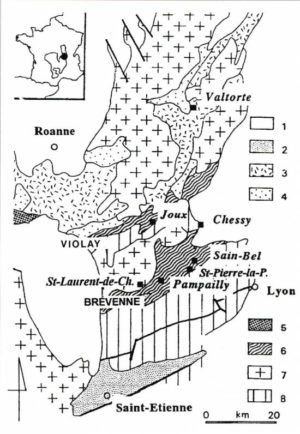
Of special interest were the silver mines of Pampailly, in Brussieu, south of l’Arbresle and Tarare, 25 kilometers west of Lyon, acquired and exploited as early as 1388 by Hugues Jossard, a Lyonnais jurist. They were very old, but their normal operation had been severely disrupted during the war. In addition, there were the Saint-Pierre-la-Palud and Joux mines, as well as the Chessy mine, whose copper was also used for weapons production.
Jacques Cœur made them operational. Near the mines, « martinets » – charcoal-fired blast furnaces – transformed the ore into ingots. Cœur brought in engineers and skilled workers from Germany, at the time a region far ahead of us in this field. However, without a pumping system, mining was no picnic.
Under Jacques Cœur’s management, the workers benefited from wages and comforts that were absolutely unique at the time. Each bunk had its own feather bed or wool mattress, a pillow, two pairs of linen sheets and blankets, a luxury that was more than unusual at the time. The dormitories were heated.
High quality food was provided to the laborers: bread containing four-fifths wheat and one-fifth rye, plenty of meat, eggs, cheese and fish, and desserts included exotic fruits such as figs and walnuts. A social service was organized: free hospitalization, care provided by a surgeon from Lyon who kept accident victims « en cure ». Every Sunday, a local priest came to celebrate a special mass for the miners. On the other hand, workers were subject to draconian discipline, governed by fifty-three articles of regulation that left nothing to chance.
The Ports of Montpellier and Marseille

On his return from the Levant in 1432, Jacques Coeur chose to make Montpellier the nerve center of his port and naval operations.
In principle, Christians were forbidden to trade with Infidels. However, thanks to a bull issued by Pope Urban V (1362-1370), Montpellier had obtained the right to send « absolved ships » to the East every year. Jacques Cœur obtained from the Pope that this right be extended to all his ships. Pope Eugene IV, by derogation of August 26, 1445, granted him this benefit, a permission renewed in 1448 by Pope Nicholas V.

At the time, only Montpellier, in the middle of the east-west axis linking Catalonia to the Alps (the Roman Domitian Way) and whose outports were Lattes and Aigues-Mortes, had a hinterland with a network of roads that were more or less passable, an exceptional situation for the time.
In 1963, it was discovered that at the site of the village of Lattes (population 17,000), 4 km south of today’s Montpellier and on the River Lez, there had been an Etruscan port city called Lattara, considered by some to be the first port in Western Europe. The city was built in the last third of the VIth century BC. A city wall and stone and brick houses were built. Original objects and graffiti in Etruscan – the only ones known in France – have suggested that Etrurian brokers played a role in the creation and rapid urbanization of the settlement.
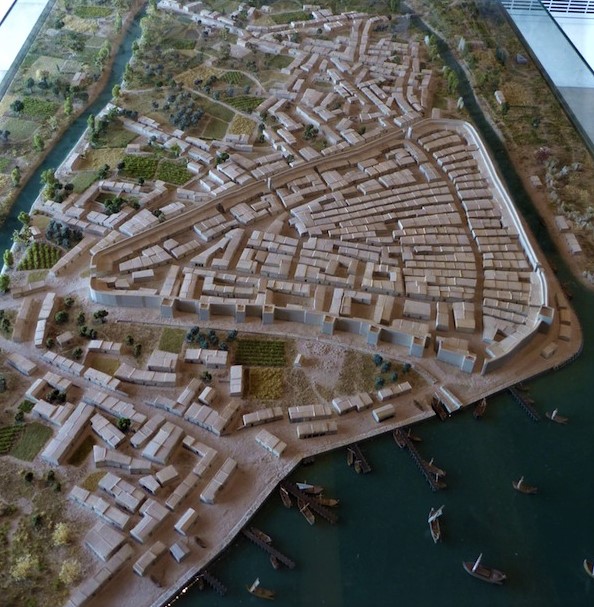
Trading with the Greeks and Romans, Lattara was a very active Gallic port until the 3rd century AD. Then maritime access changed, and the town fell into a state of numbness.
In the 13th century, under the impetus of the Guilhem family, lords of Montpellier, the port of Lattes was revitalized, only to regain its splendor when Jacques Cœur set up his warehouses there in the 15th century.
As for the port of Aigues-Mortes, built from top to bottom by Saint-Louis in the XIIIth century for the crusades, it was also one of the first in France. To connect the two, Saint-Louis dug the canal known as « Canal de la Radelle » (today’s Canal de Lunel), which ran from Aigues-Mortes across the Lake of Mauguio to the port of Lattes. Cœur restored this river-port complex to working order, notably by building Port Ariane in Lattes.

Over the following centuries, these disparate elements of canals and water infrastructure will become an efficient network built around the Canal du Rhône à Sète, a natural extension of the « bi-oceanic » Canal du Midi (between the Meditteranean and the Atlantic) begun by Jean-Baptiste Colbert (see map).
Coeur had the local authorities involved in his project, shaking Montpellier out of its age-old lethargy. At the time, the town had no market or covered sales buildings. Also lacking were moneychangers, shipowners and other cloth merchants.
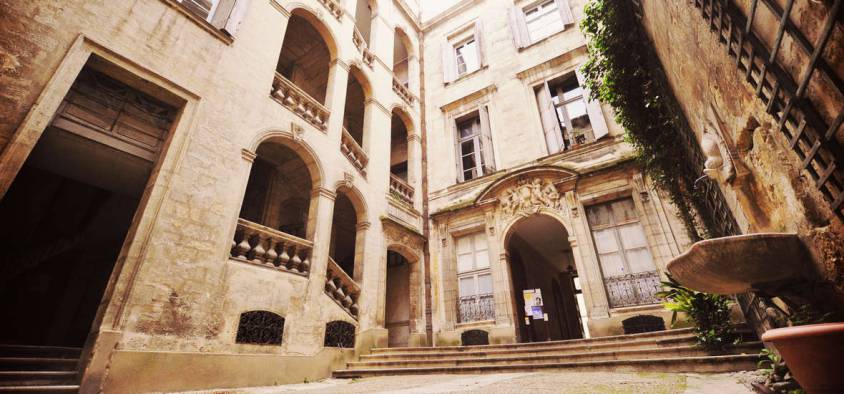

In Montpellier, an entire district of merchants and warehouses was erected him, the Great Merchants Lodge, modeled on those in Perpignan, Barcelona and Valencia.
Numerous houses in Béziers, Vias and Pézenas also belonged to him, as did residences in Montpellier, including the Hôtel des Trésoriers de France, which, it is said, was topped by a tower so high that Jacques Cœur could watch his ships arrive at the nearby Port of Lattes.
And yet, as an old merchant and industrial city, Montpellier had long been home to Italians, Catalans, Muslims and Jews, who enjoyed a tolerance and understanding that was rare at the time. It’s easy to see why François Rabelais felt so at home here in the XVIth century.
Port of Marseille

The hinterland was rich and industrious. It produced wine and olive oil, in other words, exportable goods. Its workshops produced leather, knives, weapons, enamels and, above all, drapery.
From 1448 onwards, faced with the limitations of the system and the constant silting-up of the port infrastructure, Coeur moved one of his agents, the navigator and diplomat Jean de Villages, his nephew by marriage, to the neighboring port of Marseille, at that time outside the Kingdom, to the home of King René d’Anjou, where port operations were easier, a deep harbor protected from the Mistral by hills and a port equipped with waterfront shops and storehouses. The boost that Jacques Coeur gave to Montpellier’s port Lattes, Jean de Villages, on Coeur’s behalf, immediately gave to Marseille.
Shipbuilding
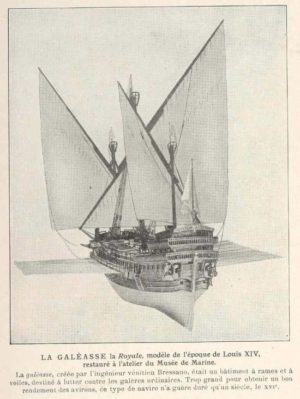
Good ports mean ocean-going ships! Hence at that time, the best France could do was build a few river barges and fishing boats.
To equip himself with a fleet of ocean-going vessels, Cœur ordered a « galéasse » (an advanced model of the ancient three-masted « galley », designed primarily for boarding) from the Genoa arsenals.
The Genoese, who saw only immediate profit in the project, soon discovered that Coeur had had the shapes and dimensions of their ship copied by local carpenters in Aigues Mortes!
Furious, they landed at the shipyard and took it back, arguing that Languedoc merchants had no right to fit out ships and trade without the prior approval of the Doge of Venice!
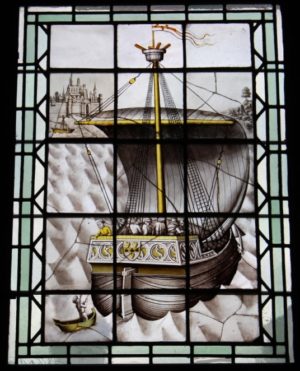
Stained glass window of a ship (a caraque) in the Palais de Jacques Cœur in Bourges.
After complicated negotiations, but with the support of Charles VII, Coeur got his ship back. Cœur let the storm pass for a few years. Later, seven great ships would leave the Aigues-Mortes shipyard, including « La Madeleine » under the command of Jean de Villages, a great sailor and his loyal lieutenant.
Judging by the stained-glass window and bas-relief in the Palais de Coeur in Bourges, these were more like caraques, North Sea vessels with large square sails and much greater tonnage than galleasses. But that’s not all!
Having understood perfectly well that the quality of a ship depends on the quality of the wood with which it is built, Cœur, with the authorization of the Duke of Savoy, had his wood shipped from Seyssel. The logs were floated down the Rhône, then sent to Aigues-Mortes via the canal linking the town to the river.
The crews
One last problem remained to be solved: that of crews. Jacques Cœur’s solution was revolutionary: on January 22, 1443, he obtained permission from Charles VII to forcibly embark, in return for fair wages, the « idle vagabonds and caimans » who prowled the ports.
To understand just how beneficial such an institution was at the time, we need to remember that France was being laid to waste by bands of plunderers – the routiers, the écorcheurs, the retondeurs – thrown into the country by the Hundred Years’ War. As always, Coeur behaves not only according to his own personal interests, but according to the general interests of France.
Connecting France to the Silk Road

Now with financial clout, ports and ships at his disposal, Cœur organized win-win commercial exchanges and, in his own way, involved France in the land and Maritime Silk Road of the time. First and foremost, he organized « détente, understanding and cooperation » with the countries of the Levant.
After diplomatic incidents with the Venetians had led the Sultan of Egypt to confiscate their goods and close his country to their trade, Jacques Coeur, a gentleman but also in charge of a Kingdom that remained dependent on Genoa and Venice for their supplies of arms and strategic raw materials, had his agents on site mediating a happy end to the incident.
Seeing other potential conflicts that could disrupt his strategy, and possibly inspired by Admiral Zheng He‘s great Chinese diplomatic missions to Africa from 1405 onwards, he convinced the king to send an ambassador to Cairo in the person of Jean de Villages, his loyal lieutenant.
The latter handed over to the Sultan the various letters he had brought with him. Flattered, the Sultan handed him a reply to King Charles VII:
« Your ambassador, man of honor, gentleman, whom you name Jean de Villages, came to mine Porte Sainte, and presented me your letters with the present you mandated, and I received it, and what you wrote me that you want from me, I did.
« Thus I have made a peace with all the merchants for all my countries and ports of the navy, as your ambassador knew to ask of me… And I command all the lords of my lands, and especially the lord of Alexandria, that he make good company with all the merchants of your land, and on all the others having liberty in my country, and that they be given honor and pleasure; and when the consul of your country has come, he will be in favor of the other consuls well high…
« I send you, by the said ambassador, a present, namely fine balsam from our holy vine, a beautiful leopard and three bowls (cups) of Chinese porcelain, two large dishes of decorated porcelain, two porcelain bouquets, a hand-washer, a decorated porcelain pantry, a bowl of fine green ginger, a bowl of almond stones, a bowl of green pepper, almonds and fifty pounds of our fine bamouquet (fine balsam), a quintal of fine sugar. Dieu te mène à bon sauvement, Charles, Roy de France. »
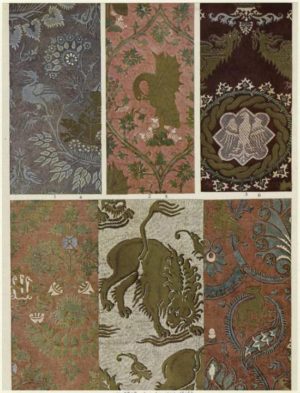
To the Orient, Coeur exported furs, leathers and, above all, cloth of all kinds, notably Flanders cloth and Lyon canvas. His « factors » also offered Egyptian women dresses, coats, headdresses, ornaments and jewels from our workshops. Then came basketry from Montpellier, oil, wax, honey and flowers from Spain for the manufacture of perfumes.
From the Near East, he received animal-figured silks from Damascus (Syria), fabrics from Bukhara (Uzbekistan) and Baghdad (Iraq); velvet; wines from the islands; cane sugar; precious metals; alum; amber; coral; indigo; coral; indigo from Baghdad; madder from Egypt; shellac; perfumes made from the essence of the flowers he exported; spices – pepper, ginger, cloves, cinnamon, jams, nutmegs, etc. – and more.
From the Far East, by the Red Sea or by caravans from the Euphrates and Turkestan, came to him: gold from Sudan, cinnamon from Madagascar, ivory from Africa, silks from India, carpets from Persia, perfumes from Arabia – later evoked by Shakespeare in Macbeth – precious stones from India and Central Asia, lapis lazuli from Afghanistan, pearls from Ceylon, porcelain and musk from China, ostrich feathers from the black Sudan.
Manufactures
As we saw in the case of mining, Coeur had no hesitation in attracting foreigners with valuable know-how to France to launch projects, implement innovative processes and, above all, train personnel. In Bourges, he teamed up with the Balsarin brothers and Gasparin de Très, gunsmiths originally from Milan. After convincing them to leave Italy, he set up workshops in Bourges, enabling them to train a skilled workforce. To this day, the Bourges region remains a major center of arms production.
In the early days of printing in Europe, Coeur bought a paper mill in Rochetaillée, on the Saône near Lyon.
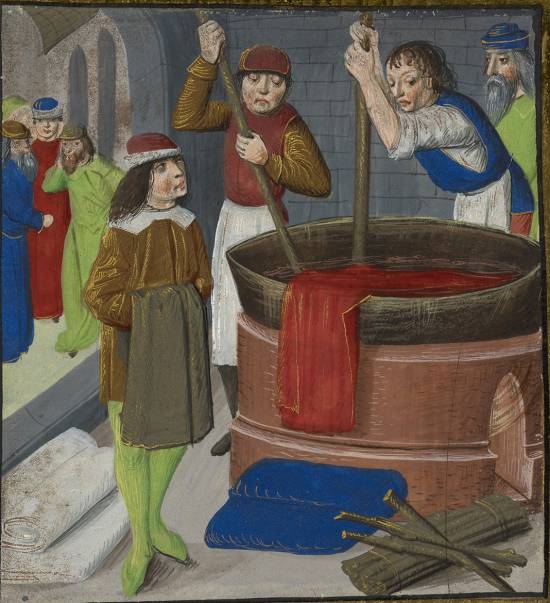
In Montpellier, he took an interest in the dyeing factories, once renowned for their cultivation of madder, a plant that had become acclimatized in the Languedoc region.
It’s easy to understand why Cœur had his agents buy indigo, kermes seeds and other coloring substances. The aim was to revive the manufacture of cloth, particularly scarlet cloth, which had previously been highly sought-after.
With this in mind, he built a fountain, the Font Putanelle, near the city walls, to serve the population and the dyers.
In Montpellier, he also teamed up with Florentine charterers based in the city, for maritime expeditions.
Through their intermediary, Coeur personally traveled to Florence in 1444, registering both his associate Guillaume de Varye and his own son Ravand as members of the « Arte della Seta » (silk production corporation), the prestigious Florentine guild whose members were the only ones authorized to produce silk in Florence.
Coeur engaged in joint ventures, as he often did in France, this time with Niccolo Bonnacorso and the Marini brothers (Zanubi and Guglielmo). The factory, in which he owned half the shares, manufactured, organized and controlled the production, spinning, weaving and dyeing of silk fabrics.
It is understood that Coeur was also co-owner of a gold cloth factory in Florence, and associated in certain businesses with the Medici, Bardi and Bucelli bankers and merchants. He was also associated with the Genevese and Bruges families.
Going International
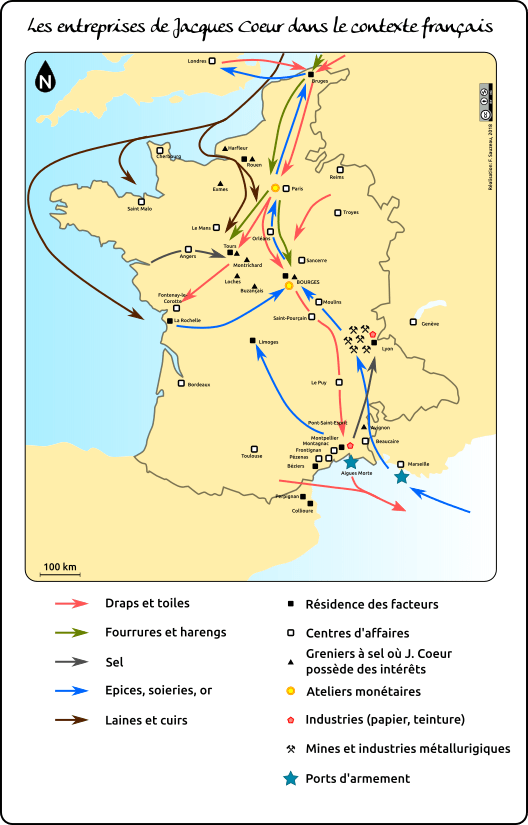
Jacques Coeur organized a vast distribution network to sell his goods in France and throughout Europe. At a time when passable roads were extremely rare, this was no easy task. Most roads were little more than widened paths or poorly functioning tracks dating back to the Gauls.
Cœur, who had his own stables for land transport, renovated and expanded the network, abolished internal tolls on roads and rivers, and re-established the collection (abandoned during the Hundred Years’ War) of taxes (taille, fouage, gabelle) to replenish public finances.
Jacques Cœur’s network was essentially run from Bourges. From there, on the French level, we could speak of three major axes: the north-south being Bruges-Montpellier, the east-west being Lyon-Tours. Added to this was the old Roman road linking Spain (Barcelona) to the Alps (Briançon) via Languedoc.
From Bourges, for example, the Silverware, which served the Court, was transferred to Tours. This was only natural, since from 1444 onwards, Charles VII settled in a small castle near Tours, Plessis-les-Tours. So it was at the Argenterie de Tours that the exotic products the Court was so fond of were stocked. This did not prevent the goods from being shipped on to Bruges, Rouen or other towns in the kingdom.
Counters also existed in Orléans, Loches, Le Mans, Nevers, Issoudun and Saint-Pourçain, birthplace of the Coeur family, as well as in Fangeaux, Carcassonne, Toulouse, Bordeaux, Limoges, Thouars, Saumur, Angers and Paris.
Orléans and Bourges stocked salt from Guérande, the Vendée marshes and the Roche region. In Lyon, salt from the Camargue and Languedoc saltworks. River transport (on the Loire, Rhône, Saône and Seine rivers) doubled the number of road carts.

Jacques Coeur revived and promoted trade fairs. Lyon, with its rapid growth, geographic location and proximity to silver-lead and copper mines, was a particularly active trading post. Goods were shipped to Geneva, Germany and Flanders.
Montpellier received products from the Levant. However, trading posts were set up all along the coast, from Collioure (then in Catalonia) to Marseille (at the home of King René d’Anjou), and inland as far as Toulouse, and along the Rhône, in particular at Avignon and Beaucaire.
A trading post was set up in La Rochelle for the salt trade, certainly with a view to expanding maritime traffic. Jacques Cœur also had « factors » in Saint-Malo, Cherbourg and Harfleur. After the liberation of Normandy, these three centers grew in importance, and were joined by Exmes. In the north-east, Reims and Troyes are worth mentioning. They manufactured cloth and canvas. Abroad, Geneva was a first-rate trading post, as the city’s fairs and markets had already acquired an international character.
Coeur also had a branch in Bruges, bringing back spices and silks from the Levant, and shipping cloth and herring from there.

The fortunes of Bruges, like many other towns in Flanders, came from the cloth industry. The city flourished, and the power of its cloth merchants was considerable. In the 15th century, Bruges was one of the lungs of the Hanseatic League, which brought together the port cities of northern Europe.
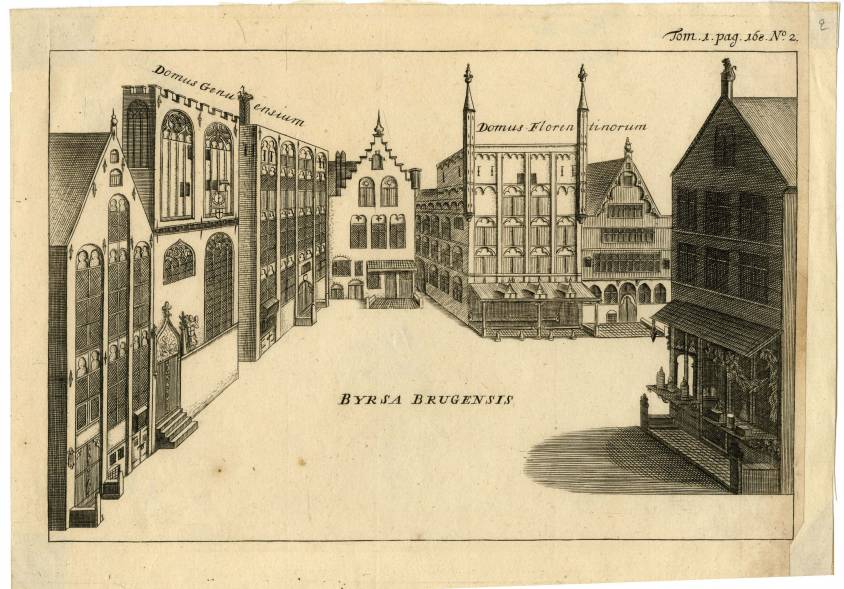

It was in Bruges that business relations were handled, and loan and marine insurance contracts drawn up. After cloth, it was the luxury industries that ensured its prosperity, with tapestries. By land, it took less than three weeks to get from Bruges to Montpellier via Paris.
Between 1444 and 1449, during the Truce of Tours between France and the English, Jacques Coeur tried to build peace by forging trade links with England.
Coeur sent his representative Guillaume de Mazoran. His other trusted associate, Guillaume de Varye, began trading in sheets from London in February 1449. He also bought leather, cloth and wool in Scotland. Some went to La Rochelle, others to Bruges.
Internationally, Coeur continued to expand, with branches in Barcelona, Naples, Genoa (where a pro-French party was formed) and Florence.
At the time of his arrest in 1451, Jacques Coeur had at least 300 « factors » (associates, commercial agents, financial representatives and authorized agents), each responsible for his own trading post in his own region, but also running « factories » on the spot, promoting meetings and exchanges of know-how between all those involved in economic life. Several thousand people associated and cooperated with him in business.
The Military Reform that saved the Nation

Cœur used the profits from this lucrative business to serve his country. When in 1449, at the end of the truce, the English troops were left to their own devices, surviving by pillaging the areas they occupied, Agnès Sorel, the king’s mistress, Pierre de Brézé, the military leader, and Jacques Cœur, encouraged the king to launch a military offensive to finally liberate the whole country.
Coeur declared bluntly:
« Sire, under your shadow, I acknowledge that I have great proufis and honors, and mesme, in the land of the Infidels, for, for your honor, the souldan has given me safe-conduct to my galleys and factors… Sire, what I have, is yours. »
We’re no longer in 1435, when the king didn’t have a kopeck to face strategic challenges. Jacques Coeur, unlike other great lords, according to a contemporary account,
« spontaneously offered to lend the king a mass of gold, and provided him with a sum amounting, it is said, to around 100,000 gold ecus to use for this great and necessary purpose ».
Under the advice of Jacques Coeur and others, Charles VII was to carry out a decisive military reform.
On November 2, 1439, at the Estates General that had been meeting in Orleans since October of that year, Charles VII ordered a reform of the army following the Estates General’s complaint about the skinners and their actions.
As Charles V (the Wise) had tried to do before him, he set up a system of standing armies that would engage these flayers full-time against the English. The nobility got in the king’s way. In fact, they often used companies of skinners for their own interests, and refused to allow the king alone to be responsible for recruiting the army.
In February 1440, the king discovered that the nobles were plotting against him. Contemporaries named this revolt the Praguerie, in reference to the civil wars in Prague’s Hussite Bohemia.
Yolande d’Aragon passed away in November 1442, but Jacques Coeur would continue pressuring the King to go ahead with the required reforms.
Following the Truce of Tours in 1444, an ordinance was issued on May 26 announcing no general demobilization should occur; instead, the best of the larger units were reconstituted as “companies of the King’s ordinance » (Compagnies d’Ordonnance),” which were standing units of cavalry well selected and well equipped; they served as local guardians of peace at local expense. This consisted of some 10,000 men organized into 15 Ordonnance companies, entrusted to proven captains. These companies were subdivided into detachments of ten to thirty lances, which were assigned to garrisons to protect the towns’ inhabitants and patrol the countryside. In a territory similarly patrolled by the forerunners of our modern gendarmerie, robbery and plunder quickly ceased.

Although still a product of the nobility, this new military formation was the first standing army at the disposal of the King of France. Previously, when the king wished to wage war, he called upon his vassals according to the feudal custom of the ban. But his vassals were only obliged to serve him for forty days. If he wished to continue the war, the king had to recruit companies of mercenaries, a plague against which Machiavelli would later warn his readers. When the war ended, the mercenaries were dismissed. They then set about plundering the country. This is what happened at the start of the Hundred Years’ War, after the victories of Charles V and Du Guesclin.
Then, with the Ordinance of April 8, 1448, the Francs-Archers corps was created. The model for the royal « francs archiers » was probably taken from the militia of archers that the Dukes of Brittany had been raising, by parish, since 1425.
The Ordinance stipulated that each parish or group of fifty or eighty households had to arm, at its own expense, a man equipped with bow or crossbow, sword, dagger, jaque and salad, who had to train every Sunday in archery. In peacetime, he stays at home and receives no pay, but in wartime, he is mobilized and receives 4 francs a month. The Francs-Archers thus formed a military reserve unit with a truly national character.
As writes the Encyclopedia Brittanica:
« With the creation of the “free archers” (1448), a militia of foot soldiers, the new standing army was complete. Making use of a newly effective artillery, its companies firmly in the king’s control, supported by the people in money and spirit, France rid itself of brigands and Englishmen alike. »
At the same time, artillery grandmaster Gaspard Bureau and his brother Jean (Note N° 4) developed artillery, with bronze cannons capable of firing cast-iron cannonballs, lighter hand cannons, the ancestors of the rifle, and very long cannons or couleuvrines that could be dragged on wagons and taken to the battlefield.
As a result, when the time came to go on the offensive, the army went into battle. From all over the country, the Francs-Archers, made up of commoners trained in every region of France rather than nobles, began to converge on the north.
The war was on, and this time, « the gale changed sides ». The merciless French army, armed to the highest standards, pushed its opponents to the limit. This was particularly true at the Battle of Formigny near Bayeux, on April 15, 1450. It was a kind of Azincourt in reverse, with English losses amounting to 80% of the forces engaged, with 4,000 killed and 1,500 taken prisoner. At last, towns and strongholds returned to the Kingdom!
Helping a Humanist Pope
As mentioned above, the Council of Basel had ended in discord. On the one hand, with the support of Charles VII and Jacques Coeur, Eugene IV was elected Pope in Rome in 1431. On the other, in Basel, an assembly of prelates meeting in council sought to impose themselves as the sole legitimate authority to lead Christendom. In 1439, the Council declared Eugene IV deposed and appointed « his » own pope: the Duke of Savoy, Amédée VIII, who had abdicated and retired to a monastery. He became pope under the name of Felix V.
His election was based solely on the support of theologians and doctors of the universities, but without the support of a large number of prelates and cardinals.
In 1447, King Charles VII commissioned Jacques Coeur to intervene for Eugene IV’s return and Felix V’s renunciation. With a delegation, he went to Lausanne to meet Felix V. While the talks were going well, Eugene IV died. As Felix V saw no further obstacles to his pontificate, the Pontifical Council in Rome quickly proceeded to elect a new pope, the humanist scholar Nicholas V (Tommaso Parentucelli).
To make France’s case to him, Charles VII sent Jacques Coeur at the head of a large delegation. Before entering the Eternal City, the French formed a procession.
The parade was sumptuous: more than 300 horsemen, dressed in bright, shimmering colors, bearing weapons and glittering jewels, mounted on richly caparisoned horses, dazzled and impressed the whole of Rome, except for the English, who saw themselves doubled by the French to serve the Pope’s mission.
From the very first meeting, Nicholas V was charmed by Jacques Coeur. Slightly ill, Coeur was treated by the pope’s physician. Thanks to information obtained from the Pontiff, notably on the limits of concessions to be made, Coeur’s delegation subsequently obtained the withdrawal of Felix V, with whom Coeur remained on good terms.
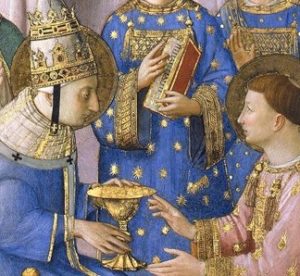
Nicholas V, it should be remembered, was a happy exception. Nicknamed the « humanist pope », he knew Leonardo Bruni (Note N° 5), Niccolò Niccoli (Note N° 6) and Ambrogio Traversari (Note N° 7) in Florence, in the entourage of Cosimo de’ Medici.
With the latter and Eugenio IV, whose right-hand man he was, Nicholas V was one of the architects of the famous Council of Florence, which sealed a « doctrinal union » between the Western and Eastern Churches. (Note N° 8)
Elected pope, Nicholas V considerably increased the size of the Vatican Library. By the time of his death, the library contained over 16,000 volumes, more than any other princely library.
He welcomed the erudite humanist Lorenzo Valla to his court as apostolic notary. Under his patronage, the works of Herodotus, Thucydides, Polybius and Archimedes were reintroduced to Western Europe. One of his protégés, Enoch d’Ascoli, discovered a complete manuscript of Tacitus’ Opera minora in a German monastery.
In addition to these, he called to his court a whole series of scholars and humanists: the scholar and former chancellor of Florence Poggio Bracciolini, the Hellenist Gianozzo Manetti, the architect Leon Battista Alberti, the diplomat Pier Candido Decembrio, the Hellenist Giovanni Aurispa, the cardinal-philosopher Nicolas de Cues, founder of modern science, and Giovanni Aurispa, the first to translate Plato’s complete works from Greek into Latin.
Nicholas V also made gestures to his powerful neighbors: at the request of King Charles VII, Joan of Arc was rehabilitated.
Later, when he sought refuge in Rome, Jacques Coeur was received by Nicholas V as if he was a member of his family.
The Coup d’Etat against Jacques Coeur
Jacques Coeur’s adventurous life ended as if in a cloak-and-dagger novel. On July 31, 1451, Charles VII ordered his arrest and seized his possessions, from which he drew one hundred thousand ecus to wage war.
The result was one of the most scandalous trials in French history. The only reason for the trial was political. The hatred of the courtiers, especially the nobles, had built up. By making each of them a debtor, Coeur, believing he had made allies of them, made terrible enemies. By launching a number of national products, he undermined the financial empires of Genoa, Venice and Florence, which eternally sought to enrich themselves by exporting their products, notably silk, to France.
One of the most relentless, Otto Castellani, a Florentine merchant, treasurer of finances in Toulouse but based in Montpellier, and one of the accusers whom Charles VII appointed as commissioner to prosecute Jacques Coeur, practiced black magic and pierced a wax figure of the silversmith with needles!
Lastly, Charles VII undoubtedly feared collusion between Jacques Coeur and his own son, the Dauphin Louis, future Louis XI, who was stirring up intrigue after intrigue against him.
In 1447, following an altercation with Agnès Sorel, the Dauphin had been expelled from the Court by his father and would never see him again. Jacques Cœur lent money to the Dauphin, with whom he kept in touch through Charles Astars, who looked after the accounts of his mines.
« Trade with infidels », « Lèse majesté », « export of metals », and many other pretexts, the reasons put forward for Jacques Coeur’s trial and conviction are of little interest. They are no more than judicial window-dressing. The proceedings began with a denunciation that was almost immediately found to be slanderous.

A certain Jeanne de Mortagne accused Jacques Coeur of having poisoned Agnès Sorel, the king’s mistress and favorite, who died on February 9, 1450. This accusation was implausible and devoid of any serious foundation; for, having placed all her trust in Jacques Coeur, she had just appointed him as one of her three executors.
Coeur is imprisoned for a dozen equally questionable reasons. When he refused to admit what he was accused of, he was threatened with « the question » (torture). Confronted by the executioners, the accused, trembling with fear, claims that he « relies » on the words of the commissioners charged with breaking him.
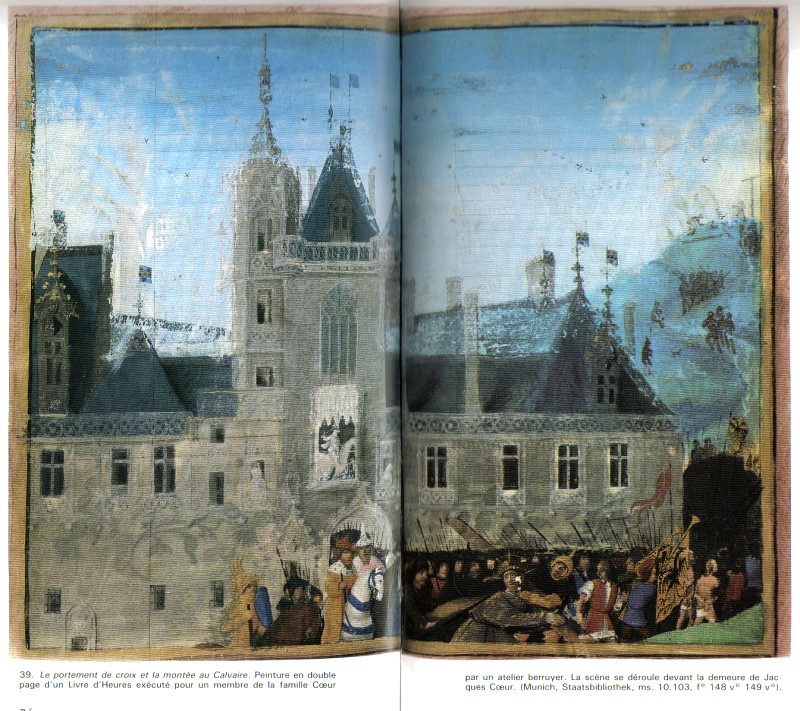
His condemnation came on the same day as the fall of Constantinople, May 29, 1453. Only the intervention of Pope Nicholas V saved his life. With the help of his friends, he escaped from his prison in Poitiers, and took the route of the convents, including Beaucaire, to Marseille for Rome.
Pope Nicholas V welcomed him as a friend. The pontiff died and was succeeded by his successor. Jacques Cœur chartered a fleet in the name of his illustrious host, and set off to fight the infidels. Jacques Coeur, we are told, died on November 25, 1456 on the island of Chios, a Genoese possession, during a naval battle with the Turks.
The great King Louis XI, unloved son of Charles VII, as evidenced by his ordinances in favor of the productive economy, would continue the recovery of France begun by Jacques Coeur. Many of Coeur’s collaborators soon entered his service, including his son Geoffroy, who, as cupbearer, became Louis XI’s most trusted confidant.
Charles VII, by letters patent dated August 5, 1457, restored to Ravant and Geoffroy Coeur a small portion of their father’s property. It was only under Louis XI that Geoffroy obtained the rehabilitation of his father’s memory and more complete letters of restitution.
NOTES:
- During the five years between Joan of Arc’s first appearances and her departure for Chinon, several people attached to the Court stayed in Lorraine, including René d’Anjou, the youngest son of Yolande d’Aragon. While Charles VII remained undecided, his mother-in-law welcomed La Pucelle with maternal solicitude, opening doors for her and lobbying the king until he deigned to receive her. During the Poitiers trial, when Jeanne’s virginity had to be verified, she presided over the council of matrons in charge of the examination. She also provided financial support, helped her gather her equipment, provided safe stopping points on the road to Orléans, and gathered food and relief supplies for the besieged. To this end, she did not hesitate to open her purse wide, even going so far as to sell her jewelry and golden tableware. Yolande’s support was rewarded on April 30, 1429 with the liberation of Orléans, followed on July 17 by the King’s coronation in Reims. Although many of her contemporaries praised her simplicity, her closeness to her subjects and the warmth of her court, Yolande d’Aragon was a stateswoman. And whatever sympathy she may have felt for her protégée, she would not hesitate to abandon her to her sad fate when her warlike impulses no longer accorded with her own political objectives : to negociate a peaceful alliance with the Duchy of Burgundy. The Duchess knew how to be implacable, and like her comrades-in-arms, the Church and the King himself, she abandoned La Pucelle to the English, to Cauchon, to her trial and to the stake. For more: Gérard de Senneville, Yolande d’Aragon : La reine qui a gagné la guerre de Cent Ans, Editions Perrin)
- Georges Bordonove, Jacques Coeur, trésorier de Charles VII, p. 90, Editions Pygmalion, 1977).
- Description given by the great chronicler of the Dukes of Burgundy, Georges Chastellain (1405-1475), in Remontrances à la reine d’Angleterre.
- Jean Bureau was Charles VII’s grand master of artillery. On the occasion of his coronation in 1461, Louis XI knighted him and made him a member of the King’s Council. Louis XI stayed at Jean Bureau’s Porcherons house in northwest Paris after his solemn entry into the capital. Jean Bureau’s daughter Isabelle married Geoffroy Coeur, son of Jacques.
- Leonardo Bruni succeeded Coluccio Salutati as Chancellor of Florence, having joined his circle of scholars, which included Poggio Bracciolini and the erudite Niccolò Niccoli, to discuss the works of Petrarch and Boccaccio. Bruni was one of the first to study Greek literature, and contributed greatly to the study of Latin and ancient Greek, offering translations of Aristotle, Plutarch, Demosthenes, Plato and Aeschylus.
- Niccolò Niccoli built up one of the most famous libraries in Florence, and one of the most prestigious of the Italian Renaissance. He was assisted by Ambrogio Traversari in his work on Greek texts (a language he did not master). He bequeathed this library to the Florentine Republic on condition that it be made available to the public. Cosimo the Elder de’ Medici was entrusted with implementing this condition, and the library was entrusted to the Dominican convent of San Marco. Today, the library is part of the Laurentian Library.
- Prior General of the Camaldolese Order, Ambrogio Traversari was, along with Jean Bessarion, one of the authors of the decree of church union. According to the Urbino court historian Vespasiano de Bisticci, Traversari gathered in his convent at San Maria degli Angeli near Florence. There, Traversari brought together the heart of the humanist network: Nicolaus Cusanus; Niccolo Niccoli, who owned an immense library of Platonic manuscripts; Gianozzi Manetti, orator of the first Oration on the Dignity of Man; Aeneas Piccolomini, the future Pope Pius II; and Paolo dal Pozzo Toscanelli, the physician-cartographer and future friend of Leonardo da Vinci, whom Piero della Francesca also frequented.
- Philosophically speaking, reminding the whole of Christendom of the primordial importance of the concept of the filioque, literally « and of the son », meaning that the Holy Spirit (divine love) came not only from the Father (infinite potential) but also from the Son (its realization, through his son Jesus, in whose living image every human being had been created), was a revolution. Man, the life of every man and woman, is precious because it is animated by a divine spark that makes it sacred. This high conception of each individual was reflected in the relationship between human beings and their relationship with nature, i.e., the physical economy.
Uccello, Donatello, Verrocchio and the art of military command
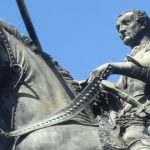
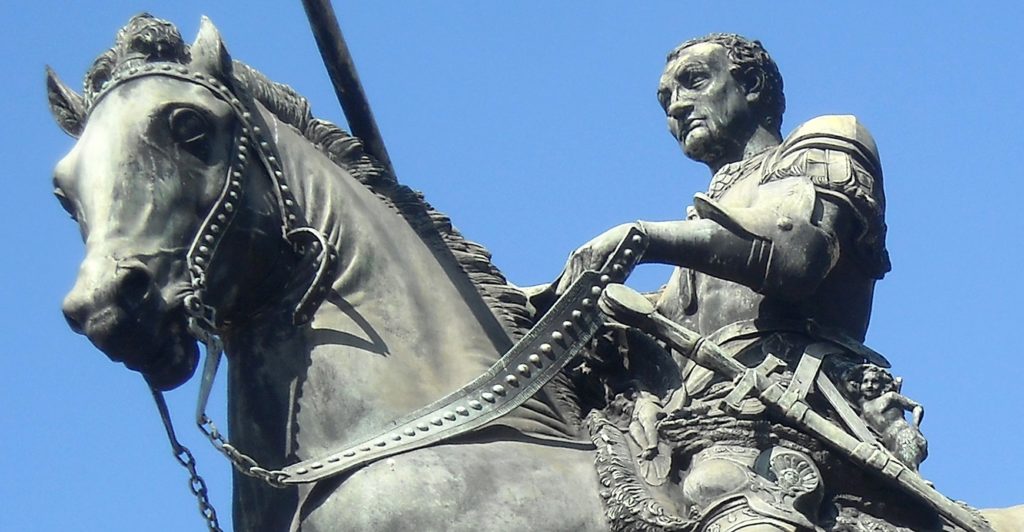
Uccello, Donatello, Verrocchio and the art of military command. An inquiry into the key events and artistic achievements that created the Renaissance. By Karel Vereycken, Paris.
Prologue

If there is still a lot to say, write and learn about the great geniuses of the European Renaissance, it is also time to take an interest in those whom the historian Georgio Vasari condescendingly called « transitional figures ».
How can one measure the contributions of Pieter Bruegel the Elder without knowing Pieter Coecke van Aelst? How can we value Rembrandt’s work without knowing Pieter Lastman? How did Raphaelo Sanzio innovate in relation to his master Perugino?
In 2019, an exceptional exhibition on Andrea Del Verrocchio (1435-1488), at the National Gallery in Washington, D.C., highlighted his great achievements, truly inspiring outbursts of great beauty that his pupil Leonardo da Vinci (1452-1519) would theorize and put to his greatest advantage.
The sfumato of Leonardo ? Verrochio is the pioneer, especially in the blurred features of portraits of women made with mixed techniques (pencil, chalk and gouache).
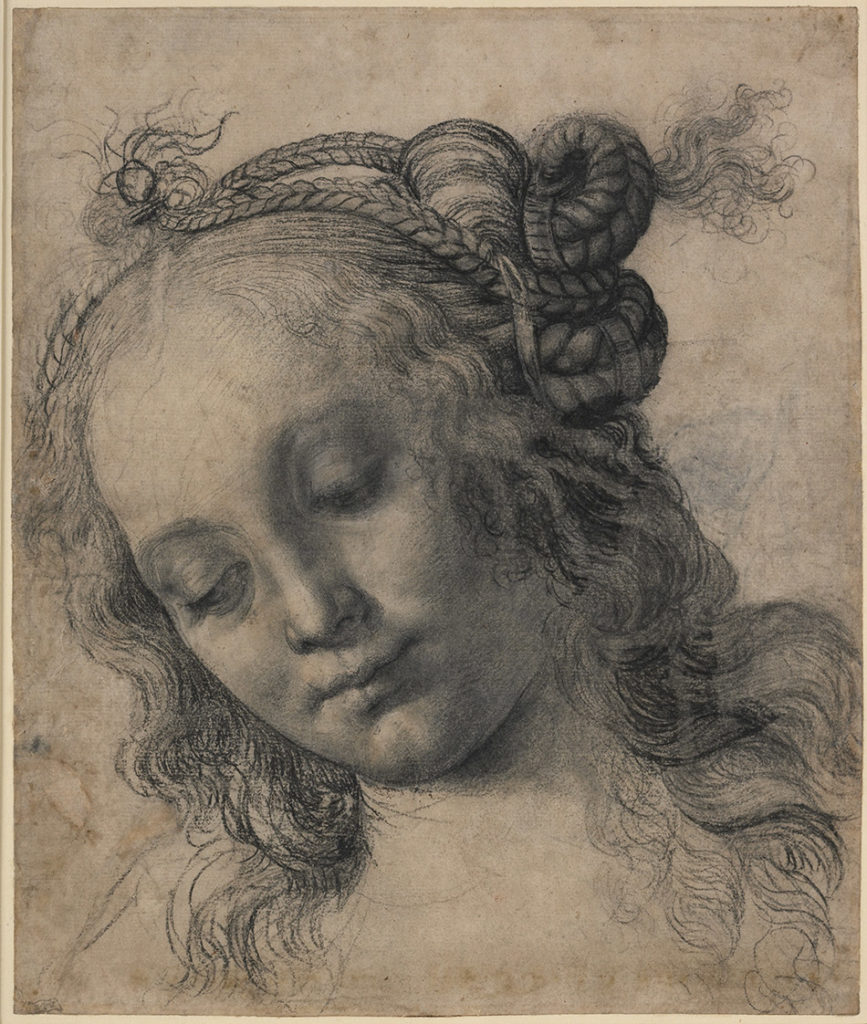
The joy of discovery
Leafing through the catalog of this exhibition, my joy got immense when I discovered (and to my knowledgne nobody else seems to have made this observation before me) that the enigmatic angel the viewer’s eye meets in Leonardo’s painting titled The Virgin on the Rocks (1483-1486) (Louvre, Paris), besides the movement of the body, is grosso modo a visual “quote” of the image of a terra cotta high relief (Louvre, Paris) attributed to Verrochio and “one of his assistants”, possibly even Leonardo himself, since the latter was training with the master as early as age seventeen ! The finesse of its execution and drapery also reminds us of the only known statue of Da Vinci, The Virgin with the laughing Child.

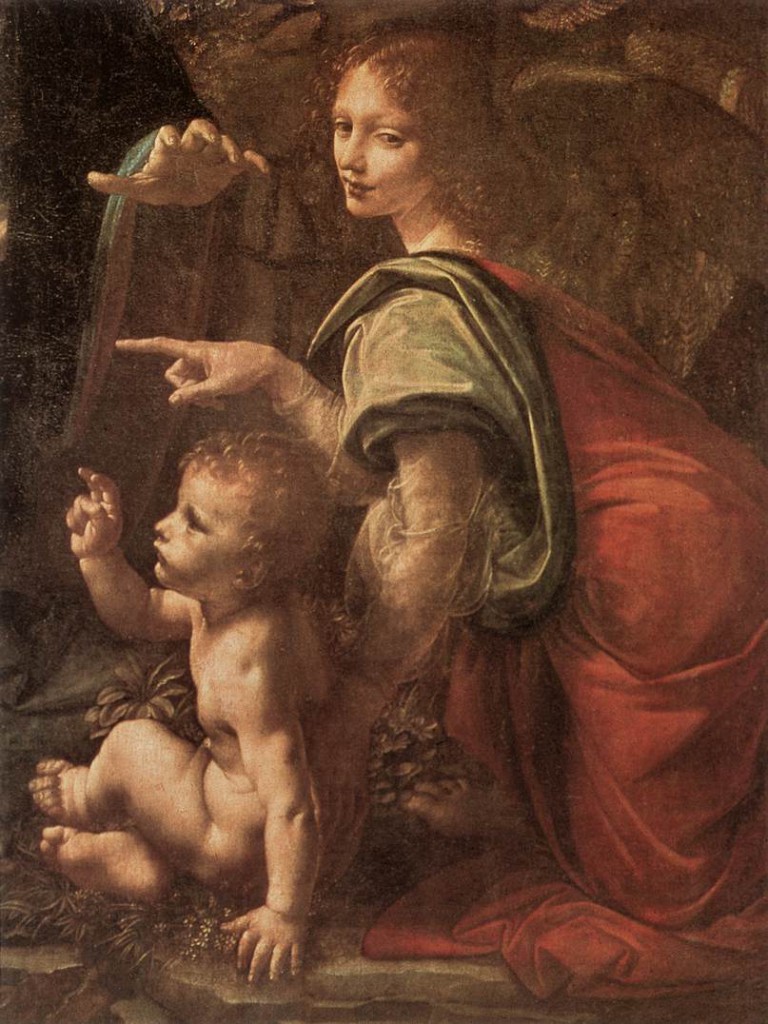
Many others made their beginnings in Verrocchio’s workshop, notably Lorenzo de Credi, Sandro Botticelli, Piero Perugino (Raphael’s teacher) and Domenico Ghirlandaio (Michelangelo’s teacher).
Coming out of the tradition of the great building sites launched in Florence by the great patron of the Renaissance, Cosimo de Medici for the realization of the doors of the Baptistery and the completion of the dome of Florence by Philippo Brunelleschi (1377-1446), Verrocchio conceived his studio as a true “polytechnic” school.
In Florence, for the artists, the orders flowed in. In order to be able to respond to all requests, Verrocchio, initially trained as a goldsmith, trained his students as craftsman-engineer-artists: drawing, calculation, interior decoration, sculpture, geology, anatomy, metal and woodworking, perspective, architecture, poetry, music and painting. A level of freedom and a demand for creativity that has unfortunately long since disappeared.
The Ghiberti legacy

In painting, Verrocchio is said to have begun with the painter Fra Filippo Lippi (1406-1469). As for the bronze casting trade, he would have been, like Donatello, Masolino, Michelozzo, Uccello and Pollaiuolo, one of the apprentices recruited by Lorenzo Ghiberti (1378-1455) whose workshop, starting from 1401, over forty years, will be in charge of casting the bronze bas-reliefs of two of the huge doors of the Baptistery of Florence.
Others suggest that Verrocchio was most likely trained by Michelozzo, the former companion of Ghiberti who said up shop with Donatello. As a teenager, Donatello had accompanied Brunelleschi on their joint expeditions to Rome to investigate the legacy of Greek and Roman art, and not only the architectural legacy.
In reality, Verrocchio only perpetuated and developed the model of Ghiberti’s « polytechnic » studio, where he learned the art. An excellent craftsman, Ghiberti was also goldsmith, art collector, musician and humanist scolar and historian.
His genius is to have understood the importance of multidisciplinarity for artists. According to him « sculpture and painting are sciences of several disciplines nourished by different teachings ».
The ten disciplines that he considered important to train artists are grammar, philosophy, history, followed by perspective, geometry, drawing, astronomy, arithmetic, medicine and anatomy.
You can discover, says Ghiberti, only when you managed to isolate the object of your research from interfering factors, and you can discover by detaching oneself from a dogmatic system;
as the nature of things want it, the sciences hidden under artifices are not constituted so that the men with narrow chests can judge them.
Anticipating the type of biomimicry that will characterize Leonardo thereafter, Ghiberti affirms that he sought:
to discover how nature functioned and how he could approach it to know how the objects come to the eye, how the sight functions and in which way one has to practice sculpture and painting.
Ghiberti, who was familiar with some of the leading members of the circle of humanists led by Salutati and Traversari, based his own reflexions on optics on the authority of ancient texts, especially Arabic. He wrote:
But in order not to repeat in a superficial and superfluous way the principles that found all opinions, I will treat the composition of the eye particularly according to the opinions of three authors, namely Avicenna [Ibn Sina], in his books, Alhazen [Ibn al Haytam], in the first book of his perspective, and Constantine [Qusta ibn Luqa] in the first book on the eye; for these authors are sufficient and treat with more certainty the things that interest us.
Deliberately ignored (but copied) by Vasari, Ghiberti’s Commentaries are a real manuel for artists, written by an artist. Most interestingly, it is by reading Ghiberti’s Commentaries that Leonardo da Vinci became familiar with important Arab contributions to science, in particular the outstanding work of Ibn al Haytam (Alhazen) whose treatise on optics had just been translated from Latin into Italian under the title De li Aspecti, and is quoted at length by Ghiberti in his Commentario Terzio. Author A. Mark Smith suggests that, through Ghiberti, Alhazen’s Book of Optics
may well have played a central role in the development of artificial perspective in early Renaissance Italian painting.

Ghiberti’s comments are not extensive. However, for the pupils of his pupil Verrocchio, such as Leonardo, who didn’t command any foreign language, Ghiberti’s book did make available in italian a series of original quotes from the roman architect Vitruvius, arab scientists such as Alhazen), Avicenna, Averroes and those european scientists having studied arab optics, notably the Oxford fransciscans Roger Bacon, John Pecham and the Polish monk working in Padua, Witelo.
Finally, in 1412, Ghiberti, while busy coordinating all the works on the Gates of the Baptistry, was also the first Renaissance sculptor to cast a life-size statue in bronze, his Saint John the Baptist, to decorate Orsanmichele, the house of the Corporations in Florence.
Lost wax casting
However, in order to cast bronzes of such a size, the artists, considering the price of metal, would use the technique known as “lost wax casting”.

This technique consists of first making a model in refractory clay (A), covered with a thickness of wax corresponding to the thickness of the bronze thought necessary.
The model is then covered with a thick layer of wet plaster (B) which, as it solidifies, forms an outer mold. Finally, the very hot molten bronze, pored into the mold it penetrates by rods (J) provided for this purpose, will replace the wax.

Finally, once the metal has solidified, the coating is broken. The details of the bronze (K) are then adjusted and polished (L) according to the artist’s choice.
This technique would become crucial for the manufacture of bells and cannons. While it was commonly used in Ifé in Africa in the 12th century for statuary, in Europe it was only during the Renaissance, with the orders received by Ghiberti and Donatello, that it was entirely reinvented.
In 1466, after the death of Donatello, it was Verrocchio’s turn to become the Medici’s sculptor in title for whom he produced a whole series of works, notably, after Donatello, his own David in bronze (Bargello National Museum, Florence).
If with this promotion his social ascendancy is certain, Verrocchio found himself facing the greatest challenge that any artist of the Renaissance could have imagined: how to equal or even surpass Donatello, an artist whose genius has never been praised enough?
Equestrian art
This being said, let us now approach the subject of the art of military command by comparing four equestrian monuments:
- Roman Emperor Marcus Aurelius on the Capitoline square in Rome (175 AD) ;
- Paolo Uccello’s fresco of John Hawkwood in the church of Santa Maria del Fiore in Florence (1436);
- Erasmo da Narni, known as “Gattamelata” (1446-1450), casted by Donatello in Padua.
- Bartolomeo Colleoni by Andrea del Verrocchio in Venice (1480-1488).
Equestrian statues appeared in Greece in the middle of the 6th century B.C. to honor the victorious riders in a race. From the Hellenistic period onward, they were reserved for the highest state figures, sovereigns, victorious generals and magistrates. In Rome, on the forum, they constituted a supreme honor, subject to the approval of the Senate. Apart from being bronze equestrian statues, each one is placed in a place where their troops fought.
While each statue is a reminder of the importance of military and political command, the way in which this responsibility is exercised is quite different.
Marcus Aurelius in Rome

Marcus Aurelius was born in Rome in 121 A.D., into a noble family of Spanish origin. He was the nephew of the emperor Hadrian. After the death of Marcus Aurelius’ father, Hadrian entrusted him to his successor Antonin. The latter adopts and gives him an excellent education. He was initiated early in philosophy by his master Diognetus.
Interested in the stoics, he adopted for a while their lifestyle, sleeping on the ground, wearing a rough tunic, before he was dissuaded by his mother.
He went to Athens in 175 A.D. and became a promotor of philosophy. He helps financially the philosophers and the rhetoricians by granting them a fixed salary. Concerned with pluralism, he supported the Platonic Academy, the Lyceum of Aristotle, the Garden of Epicurus and the Stoic Portico.
On the other hand, during his reign, persecutions against Christians were numerous. He saw them as troublemakers – since they refused to recognize the Roman gods, and as fanatics.

Erected in 175 A.D., the statue was entirely gilded. Its location in antiquity is unknown, but in the Middle Ages it stood in front of the Basilica of St. John Lateran, founded by Constantine, and the Lateran Palace, then the papal residence.
In 1538, Pope Paul III had the monument of Marcus Aurelius transferred to the Capitol, the seat of the city’s government. Michelangelo restored the statue and redesigned the square around it, one of the fanciest in Rome. It is undoubtedly the most famous equestrian statue, and above all the only one dating back to ancient Rome that has survived, the others having been melted down into coins or weapons…
If the statue survived, it is thanks to a misunderstanding: it was thought that it represented Constantine, the first Roman emperor to have converted to Christianity at the beginning of the 4th century, and it was out of the question to destroy the image of a Christian ruler.
Neither the date nor the circumstances of the commission are known.
But the presence of a defeated enemy under the right foreleg of the horse (attested by medieval testimonies and since lost), the emperor’s gesture and the shape of the saddle cloth, unusual in the Roman world, make us to belief that the statue commemorated Marcus Aurelius’ victories, perhaps on the occasion of his triumph in Rome in 176, or even after his death. Indeed, his reign (161-180) was marked by incessant wars to counter the incursions of Germanic or Eastern peoples on the borders of an Empire that was now threatened and on the defensive.
The horse, while not that large, but looking powerful, has been sculpted with great care and represented with realism. Its nostrils are strongly dilated, its lips pulled by the bit reveal its teeth and tongue.
One leg raised, he has just been stopped by his rider, who holds the reins with his left hand. Like him, the horse turns his head slightly to the right, a sign that the statue was made to be seen from that side. Part of his harness is preserved, but the reins have disappeared.
The size of the athletic rider nevertheless dominates that of a powerful horse that he rides without stirrups (accessories unknown to the Romans). He is dressed in a short tunic belted at the waist and a ceremonial cloak stapled on the right shoulder. It is a civil and not a military garment, adapted to a peaceful context. He is wearing leather shoes held together by intertwined straps.
The statue is striking for its size (424 cm high) and for the majesty it exudes. Without armor or weapons, eyes wide open and without emotion, the emperor raises his right arm. His authority derives above all from the function he embodies: he is the Emperor who protects his Empire and his people by punishing their enemies without mercy.
The fresco by Paolo Uccello

In 1436, at the request of Cosimo de’ Medici, the young Paolo Uccello was commissioned to paint a fresco depicting John Hawkwood (1323-1394), the son of an English tanner who had become a warlord during the Hundred Years’ War in France and whose name would be Italicized into Giovanno Acuto.
Serving the highest bidder, especially rival Italian cities, Hawkwood’s company of mercenaries was no slouch.
In Florence, although it may seem paradoxical, it was the humanist chancellor Coluccio Salutati (1331-1406) who put Hawkwood at the head of a regular army in the service of the Signoria.
This approach is not unlike that of Louis XI in France, who, in order to control the skinners and other cutthroats who were ravaging the nation, did not hesitate to discipline them by incorporating them into a standing army, the new royal army.
The humanists of the Renaissance, notably Leonardo Bruni (1370-1440) in his De Militia (1420), became aware of the curse of using mercenaries in conflicts and of the fact that only standing army, i.e. a permanent army formed of professionals and even better by citizens and maintained by a state or a city could guarantee a lasting peace.
Although Hawkwood faithfully protected the city for 18 years, his ugly “professionalism” as a mercenary was not unanimously accepted, to the point of inspiring the proverb “Inglese italianato è un diavolo Incarnato” (« An Italianized Englishman is a devil incarnate »).
Petrarch denounced him, Boccaccio tried in vain to mount a diplomatic offensive against him, St. Catherine of Sienna begged him to leave Italy, Chaucer met him and, no doubt, used him as a model for The Knight’s Tale (The Canterbury Tales).
All this will not prevent Cosimo, a member of the humanist conspiracy and a great patron of the arts, returning from exile, from wanting to honor him. But in the absence of the bronze equestrian statue (which had been promised to him…), Florence, will only offer him a fresco in the nave of Santa Maria del Fiore, that is to say under right under the cupola of the Duomo.

From the very beginning, Paolo Uccello’s fresco seems to have stirred quite a controversy. A preparatory drawing in the collections of Florence’s Uffizi Museum indicates the commander, more armed, taller, and, with his horse in a more military position. Uccello had originally depicted Hawkwood as « more threatening », with his baton raised and horse « at the ready ».
A recent ultraviolet study confirms the fact that the painter had originally depicted the condottiere armed from head to toe. In the final version, he wears a sleeveless jacket, the giornea, and a coat; only his legs and feet are protected by a piece of armor. The final version presents a less imposing rider, less warlike, more human and more individualized
In the dispute, it was not Uccello who was considered faulty, but his sponsors. Moreover, the painter was quickly given the task of redoing the fresco in a way deemed “more appropriate”.
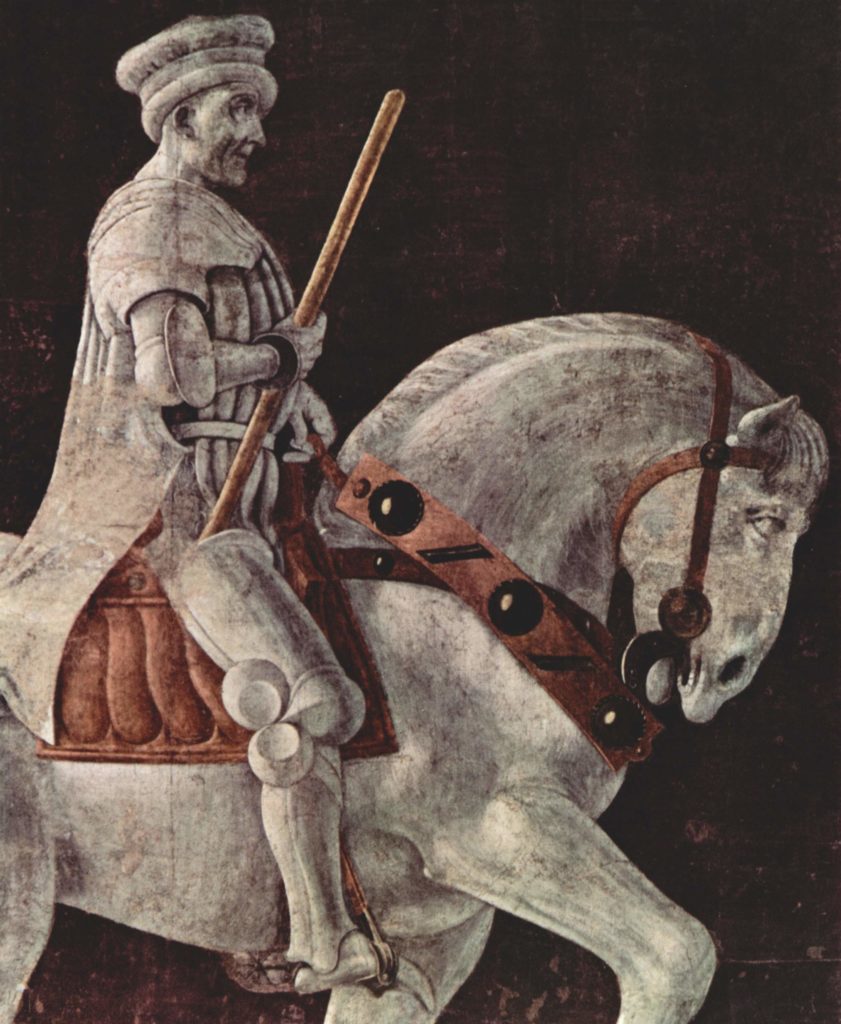
Unfortunately, there is no record of the debates that must have raged among the officials of the church fabric (Opera Del Domo). What is certain is the fact that in the final version, visible today, the condottiere has been transformed from a warlord running a gang of mercenaries, into the image of philosopher-king whose only weapon is his commanding staff. At the bottom of the fresco, we can read in Latin: “Giovanno Acuto, British knight, who was in his time held as a very prudent general and very expert in military affairs.”
The position of the horse and the perspective of the sarcophagus have been changed from a simple profile to a di sotto in su view.
If this perspective is somewhat surrealistic and the pose of the horse, raising both legs on the same side, simply impossible, it remains a fact that Uccello’s fresco will set “the standards” of the ideal and impassive image of virtue and command that must embody the hero of the Renaissance: his goal is no longer to “win” a war (the objective of the mercenary), but to preserve the peace by preventing it (the objective of a philosopher-king or simply a wise head of state).
Paradigm shift
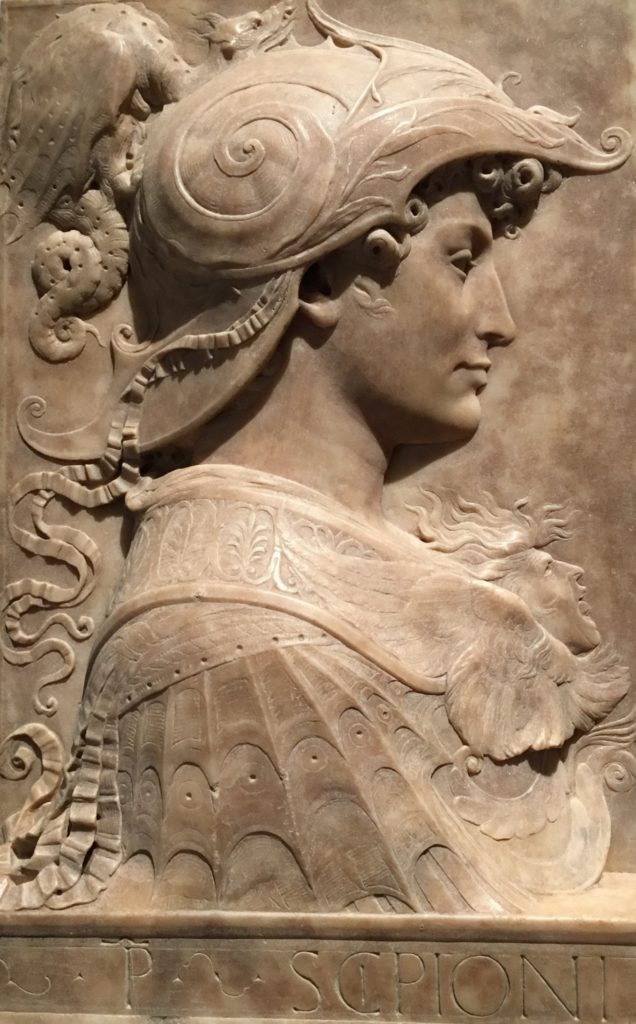
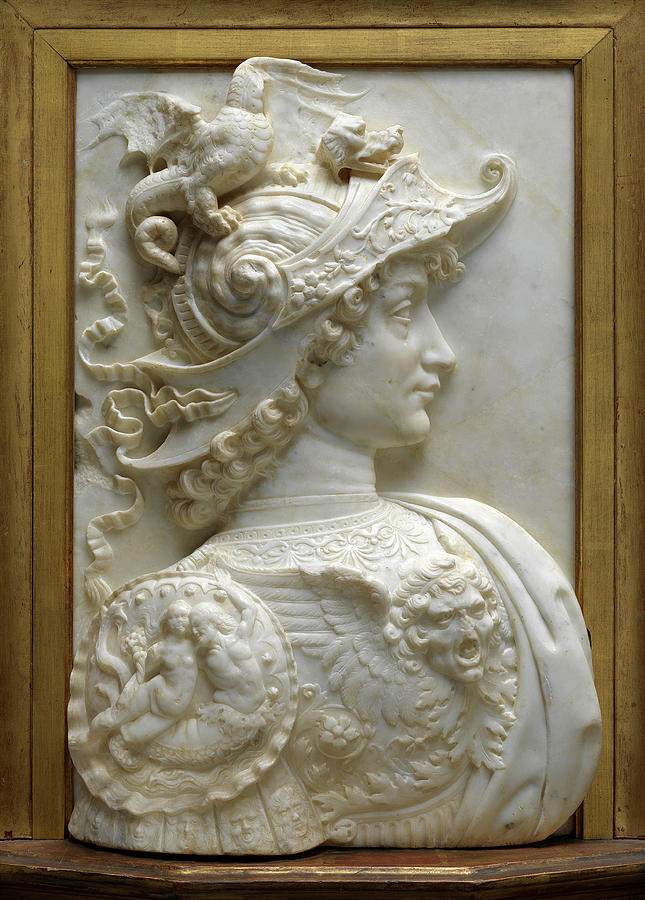

As such, one might say that Uccello’s fresco announces the “paradigm shift” marking the end of the age of perpetual feudal wars, to that of the Renaissance, that is to say to that of a necessary concord between sovereign nation-states whose security is indivisible, the security of one being the guarantee of the security of the other, a paradigm even more rigorously defined in 1648 at the Peace of Westphalia, when it made the agapic notion of the “advantage of the other” the basis of its success.
One historian suggests that the recommissioning of Uccello’s fresco was part of the « refurbishing » of the cathedral associated with its rededication as Santa Maria del Fiore by the humanist Pope Eugene IV in March 1436, determined to convince the Eastern and Western Churches to peacefully overcome their divisions and réunite as was attempted at the Council of Florence of 1437-1438 and for which the Duomo was central.
Interesting is the fact that Uccello’s fresco appeared at around the same time that Yolande d’Aragon and Jacques Coeur, who had his Italian connections, persuaded the French king Charles VII to put an end to the Hundred Years’ War by setting up a permanent, standing army.
In 1445, an ordinance was passed to discipline and rationalize the army in the form of cavalry units grouped into Compagnies d’Ordonnances, the first permanent army at the disposal, not of warlords or aristocrats, but of the King of France.
Donatello’s “Gattamelata” (1447-1453)

It was only some years later, in Padua, between 1447 and 1453, that Donatello would work on the statue of Erasmo da Narni (1370-1443), a Renaissance condottiere, i.e. the leader of a professional army in the service of the Republic of Venice, which at the time ruled the city of Padua. An important detail is that Erasmo was nicknamed “il Gattamelata”.
In French, « faire la chattemite » means to affect a false air of sweetness to deceive or seduce… Others explain that his nickname of “honeyed cat” comes from the fact that his mother was called Melania Gattelli or that he wore a crest (a helmet) in the shape of a honey-colored cat in battle…
The man was of humble origin, the son of a baker, born in Umbria around 1370. He learned to handle weapons from Ceccolo Broglio, lord of Assisi, and then, when he was in his thirties, from the captains of Braccio da Montone, who was known for recruiting the best fighters.
In 1427, Erasmo, who had the confidence of Cosimo de’ Medici, signed a seven-year contract with the humanist Pope Martin V, who wished to strengthen an army corps loyal to his cause with the aim of bringing to heel the lords of Emilia, Romagna and Umbria who were rebellious against papal authority.

He bought a huge suit of armor to reinforce his high stature. He was not an impetuous fighter, but a master of siege warfare, which forced him to take slow, thoughtful and progressive action. He spied on his prey for a long time before trapping it.
In 1432, he captured the fortress of Villafranca near Imola by cunning alone and without fighting. The following year he did the same to capture the fortified town of Castelfranco, thus sparing his soldiers and his treasure.
Those who were unable to grasp his tactics, accused him of being a coward for “running away” from the front-line, not realizing, that on a given moment, this was part of the tactics of his winning strategy.
He was a prudent captain, with a very well-mannered troop, and he was careful to maintain good relations with the magistrates of the towns that employed him. He obtained the rank of captain-general of the army of the Republic of Venice during the fourth war against the Duke of Milan in 1438 and died in Padua in 1443. Following his death, the Venetian Republic gave him full honors and Giacoma della Leonessa, his widow, commissioned a sculpture in honor of her late husband for 1650 ducats.
The statue, which represents the life-size condottiere, in antique-style armor and bareheaded, holding his commanding staff in his raised right hand, on his horse, was made by the lost-wax method. As early as 1447, Donatello made the models for the casting of the horse and the condottiere. The work progresses at full speed and the work is completed in 1453 and placed on its pedestal in the cemetery that adjoins the Basilica of Padua.
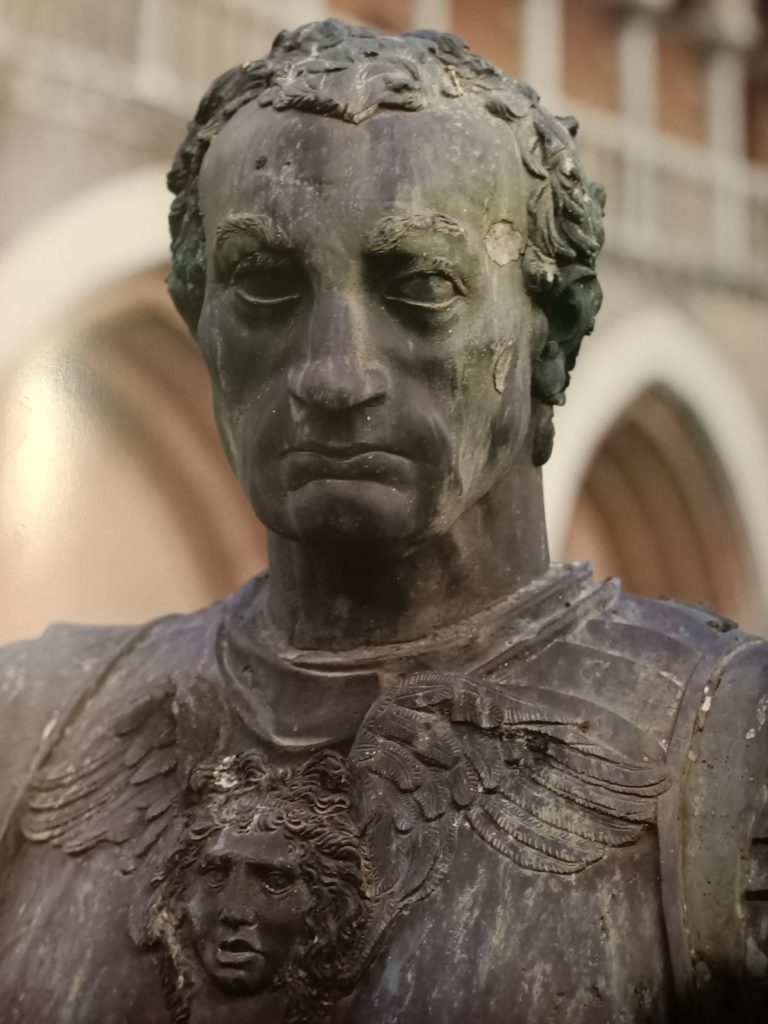
Brilliant for his cunning and guile, Gattamelata was a thoughtful and effective fighter in action, the type of leader recommended by Machiavelli in The Prince, and which appears in the sixteenth century by François Rabelais in his account of the “Picrocholine wars”.
Not the brute power of weapons, but the cunning and the intelligence will be the major qualities that Donatello will make appear powerfully in his work.
Contrary to Marcus Aurelius, it is not his social status that gives the commander his authority, but his intelligence and his creativity in the government of the city and the art of war. Donatello had an eye for detail. Looking at the horse, we see that it is a massive animal but far from static. It has a slow and determined gait, without any hesitation.
But that’s not all. A rigorous analysis shows that the proportions of the horse are of a “higher order” than those of the condottiere. Did Donatello make a mistake and make Erasmo too small and the horse too large? No, the sculptor made this choice to emphasize the value of Gattamelata who, thanks to his skills, is able to tame even wild and gigantic animals. In addition, the horse’s eyes show him as wild and untameable. Looking at him, one could say that it is impossible to ride him, but Gattamelata manages it with ease and without effort.
Because if you look at the reins in the hands of the protagonist, you will notice that he holds them in complete tranquility. This is another detail that highlights Erasmus’ powerful cunning and ingenuity.
Next, did you notice that one of the horse’s legs rests on a sphere? If this sphere (which could also be a cannonball, since Erasmus was a warrior) serves to give stability to Donatello’s composition as a whole, it also indicates how this animal of gigantic strength (symbolizing here warlike violence), once tamed and well used, allows the globe (the earthly kingdom) to be kept in balance.
Having told you about the horse, it is time to know more about the condottiere.
He has a proud and determined expression. The baton of command, which he holds in his hand, delicately touches the horse’s mane. The baton is not just a symbolic object; he may have received it in 1438 from the Republic of Venice.
Unlike Uccello’s fresco, Gattamelata is not dressed as a contemporary prince of commander, but as a figure beyond time embodying both the past, the present and the future. To capture this, Donatello, who takes care of every detail, has taken an ancient model and modernized it with incredible results. The details of the protagonist’s armor include purely classical motifs such as the head of Medusa, taken from Marcus Aurelius, in Greek mythology one of the three gorgons whose eyes had the power to petrify any mortal who crossed her gaze.
Although the helmet of Gattamelata would have allowed to identify him at eyesight, Donatello has discarded this option. With a helmet on his head, he would have been the symbol of a bloodthirsty warrior, rather than a cunning man. Even better, the absence of a helmet allows the artist to show us a fearless commander whose fixed gaze shows his determination. With the figure slightly bowed and legs extended, the sword in its scabbard placed at an angle, Donatello gives the illusion of an “imbalance” that reinforces in the viewer’s mind the idea that the horse is advancing with full strength.
Art historian John Pope-Hennessy is emphatic:
The fundamental differences between the Gattamelata and Marcus Aurelius are obvious. The (roman) emperor sits passively on his horse, legs dangling. In the fifteenth century, on the other hand, the art of riding implies the use of spurs. The impression of authority that emanates from the monument designed by Donatello comes from the total domination of the condottiere over his horse. (…) The soles of the feet are exactly parallel to the surface of the pedestal, as are the large six-pointed spurs, stretched to the middle of the animal’s flank.
As a result, Gattamelata is not a remake of the “classical Greek or Roman sculpture” of a hero with a sculpted physique, but a kind of new man who succeeds through reason. The fact that the statue has such a high pedestal also has its reason. Placed at such a height, the Gattamelata does not “share” our own space. It is in another dimension, eternal and out of time.
Verrocchio’s Colleoni

Some thirty years later, between 1480 and 1488, Andrea del Verrocchio, after a contest, was selected to make a large bronze equestrian statue of another Italian condottiere named Bartolomeo Colleoni (1400-1475).
A ruthless mercenary, working for a patron one day and his rival the next day, he served from 1454 the Republic of Venice with the title of general-in-chief (capitano generale). He died in 1475 leaving a will in which he bequeathed part of his fortune to Venice in exchange for the commitment to erect a bronze statue to his honor in St. Mark’s Square.
The Venetian Senate agreed to erect an equestrian monument to his memory, while charging the costs to the widow of the deceased…
In addition, the Senate refused to erect it in St. Mark’s Square, which was, along with St. Mark’s Basilica, at the heart of the city’s life. The Senate therefore decided to interpret the conditions set by Colleoni in his last will and testament without contradicting them, choosing to erect his statue in 1479, not in St. Mark’s Square, but in an area further from the city center in front of the Scuola San Marco, on the campo dei Santi Giovanni e Paolo.
Although Verrocchio had started working on the project since 1482, it remained unfinished at his death in 1488. And it is, not as Verrocchio wished, his heir Lorenzo di Credi who will cast the statue, but the Venetian Alessandro Leopardi (who lost the contest to Verrocchio), who will not hesitate to sign it!
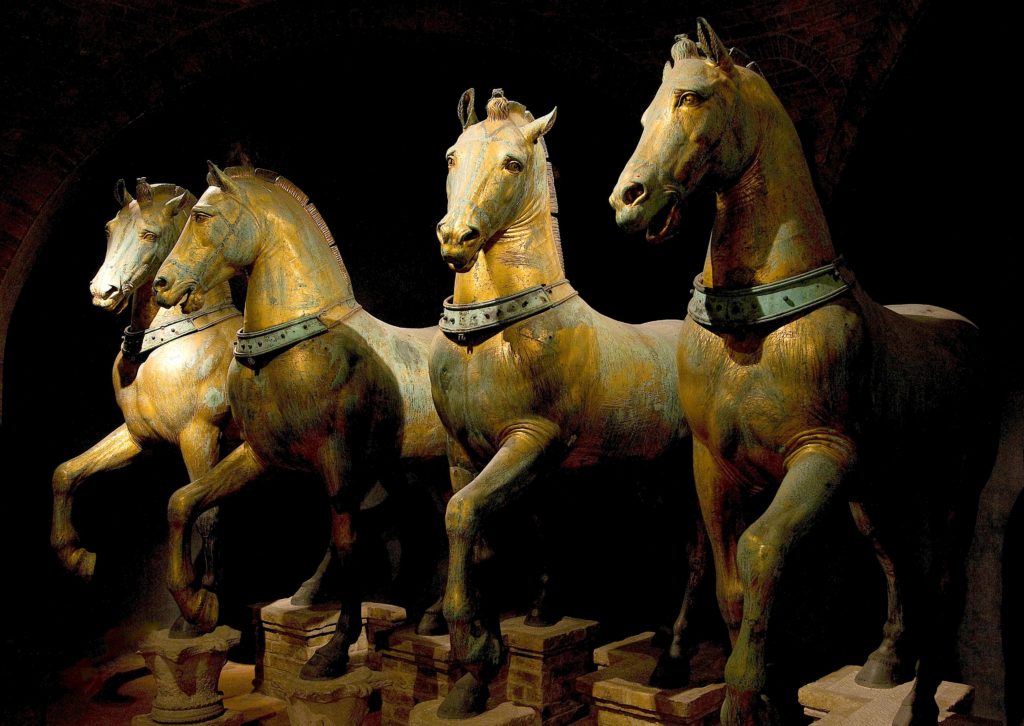
If the horse is in conformity with the typology of the magnificent horses composing the quadriga overseeing the Basilica of Saint Mark of Venice (Greek statuary of the IVth century BC brought back by the crusaders from Constantinople to Venice in 1204) and of the horse of Marcus Aurelius, its musculature is more nervously underlined and traced. Objectively, this statue is ideally more proportionate. There is also more fine detail, a result of new pre-sculpture techniques, making the work captivating and realistic to look at.

The sculpture overflows its pedestal. According to André Suarès quoted in The Majesty of Centaurs:
Colleone on horseback walks in the air, he will not fall. He cannot fall. He leads his earth with him. His base follows him […] He has all the strength and all the calm. Marcus Aurelius, in Rome, is too peaceful. He does not speak and does not command. Colleone is the order of the force, on horseback. The force is right, the man is accomplished. He goes a magnificent amble. His strong beast, with the fine head, is a battle horse; he does not run, but neither slow nor hasty, this nervous step ignores the fatigue. The condottiere is one with the glorious animal: he is the hero in arms.
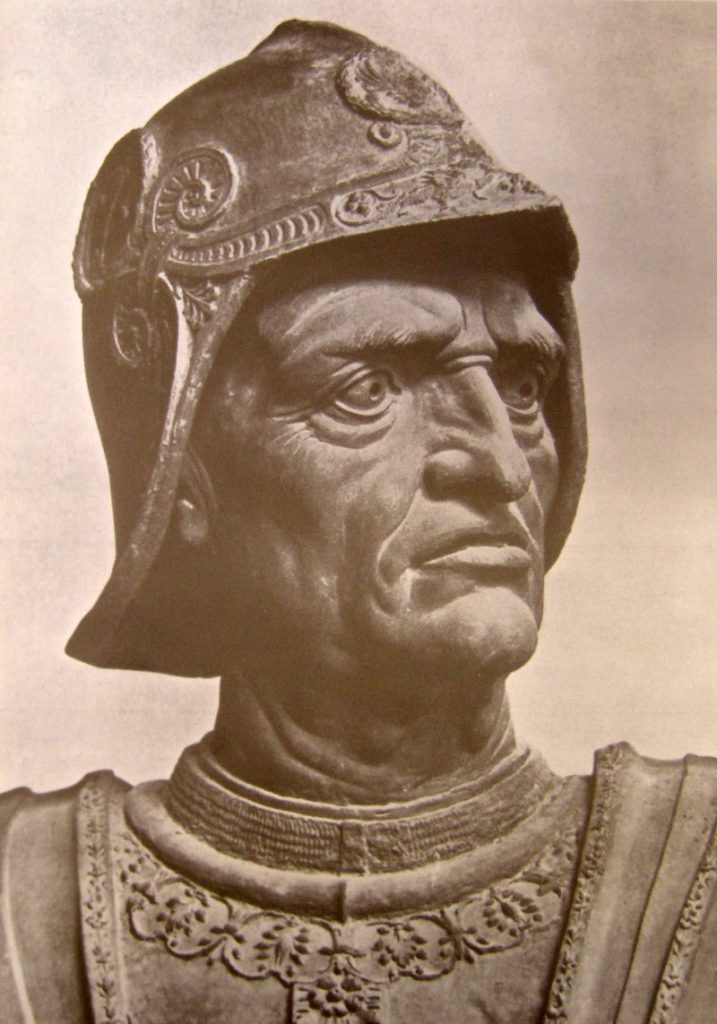
His baton of command is even metamorphosed into a bludgeon! But since it is not Verrocchio who finished this work, let us not blame the latter for the warlike fury that emanates from this statue.
Venice, a vicious slave-trading financial and maritime Empire fronting as a “Republic”, clearly took its revenge here on the beautiful conception developed during the Renaissance of a philosopher-king defending the nation-state.
On the aesthetic level, this mercenary smells like an animal. As a good observer, Leonardo warned us: when an artist represents a man entirely imprisoned by a single emotion (joy, rage, sadness, etc.), he ends up painting something that takes us away from the truly human soul. This is what we see in this equestrian statue.
If, on the contrary, the artist shows several emotions running through the figure represented, the human aspect will be emphasized. This is the case, as we have seen, with Donatello’s Gattamelata, uniting cunning, determination and prudence to overcome fear the face of threat.
Leonardo’s own, gigantic project to erect a gigantic bronze horse, on which he worked for years and developed new bronze casting techniques, unfortunately was never build, seen the hectic circumstances.
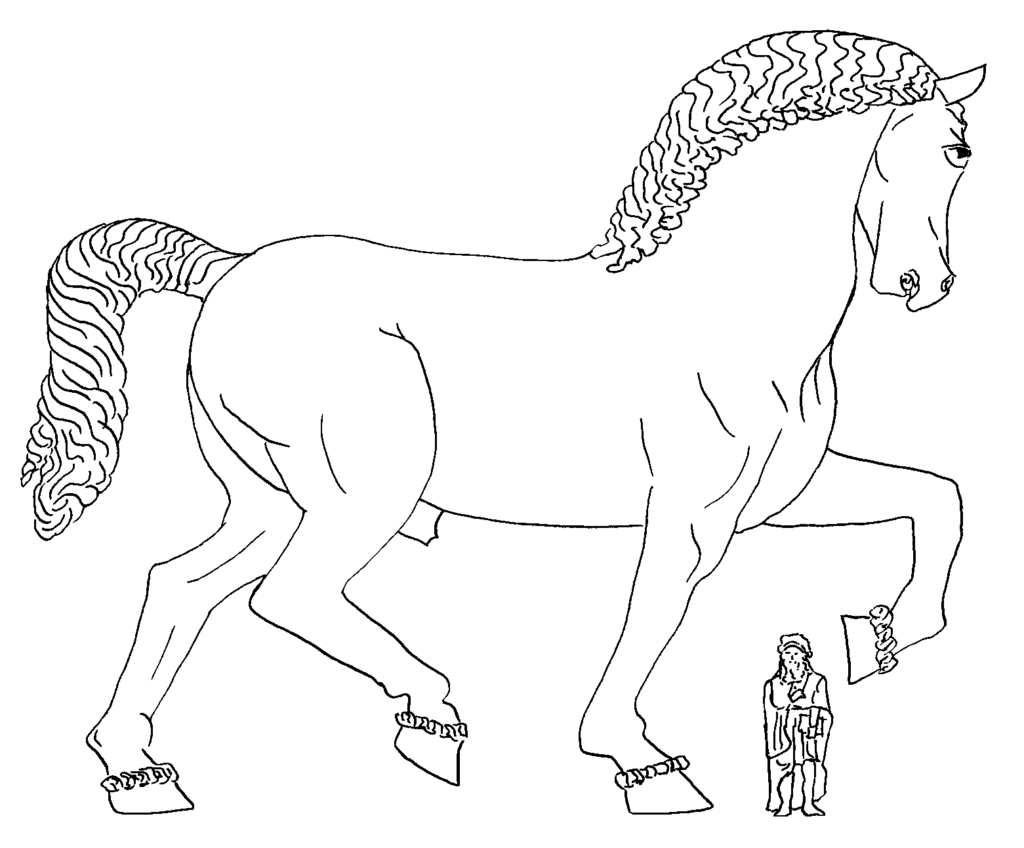
Finally, beyond all the interpretations, let us admire the admirable know-how of these artists. In terms of craft and skill, it generally took an entire life to become able to realize such great works, not even mentioning the patience and boundless passion required.
Up to us to bring it back to life !
Bibliography:
- Verrocchio, Sculptor and Painter of Renaissance Florence, Andrew Butterfield, National Gallery, Princeton University Press, 2020;
- Donatello, John Pope-Hennessy, Abbeville Press, 1993;
- Uccello, Franco and Stefano Borsi, Hazan, 2004;
- Les Commentaires de Lorenzo Ghiberti dans la culture florentine du Quattrocento, Pascal Dubourg-Glatigny, Histoire de l’Art, N° 23, 1993, Varia, pp. 15-26;
- Monumento Equestre al Gattamelata di Donatello: la Statua del Guerriero Astuto, blog de Dario Mastromattei, mars 2020;
- La sculpture florentine de la Renaissance, Charles Avery, Livre de poche, 1996 ;
- La sculpture de la Renaissance au XXe siècle, Taschen, 1999;
- Ateliers de la Renaissance, Zodiaque-Desclée de Brouwer, 1998;
- Rabelais et l’art de la guerre, Christine Bierre, 2007.
- The Greek language project, Plato and the Renaissance, Karel Vereycken, jan. 2021.
On Leonardo da Vinci’s « Vitruvian Man »
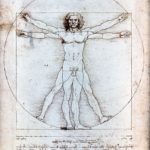
By Karel Vereycken
Leonardo da Vinci’s « Viruvian Man ». Since we’re commemorating this year (2019) Leonardo Da Vinci, who died 500 years ago, many silly things are presented by fake scholars trying to make a real living.
Since I was introduced into the canon of proportions of the human body during my training as a professional painter and engraver, I want offer you some hints on how to look at what is called Da Vinci’s « Vitruvian man », a drawing currently on exhibit at the Da Vinci show at the Louvre in Paris.
Hence, as Leonardo underlines himself in his notebooks, adopting Cusanus wordings, it is only with the « eyes of the mind » that art becomes visible, because the « eyes of the flesh » are intrensically blind to it.
Canons of proportions
Europe, and Classical Greece, as everybody should know, emerged largely by absorbing several major discoveries accomplished much earlier by other civilizations. Much of it came from Asia, but African and especially Egypt, were key.
The very practice of mummification, a process which takes at least 60 days of work, made Egypt the key area of anatomical research.
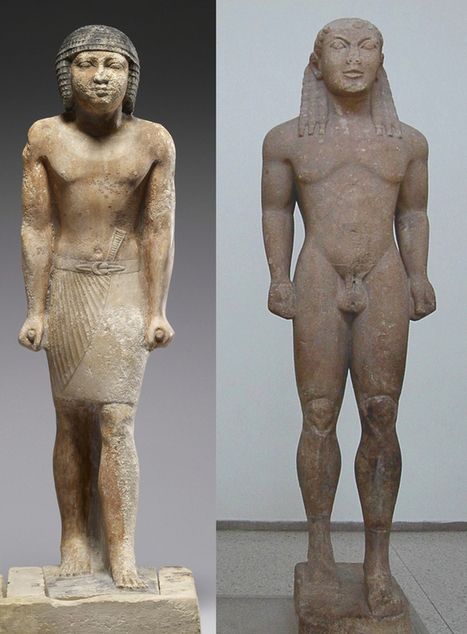
As demonstrated by early Egyptian sculpture, the exact size of the entire adult human body is 7,5 times the size of the head. The size of a newborn is only four heads, that of a seven year old, six heads and that of a 17 years old adolescent, 7 heads.
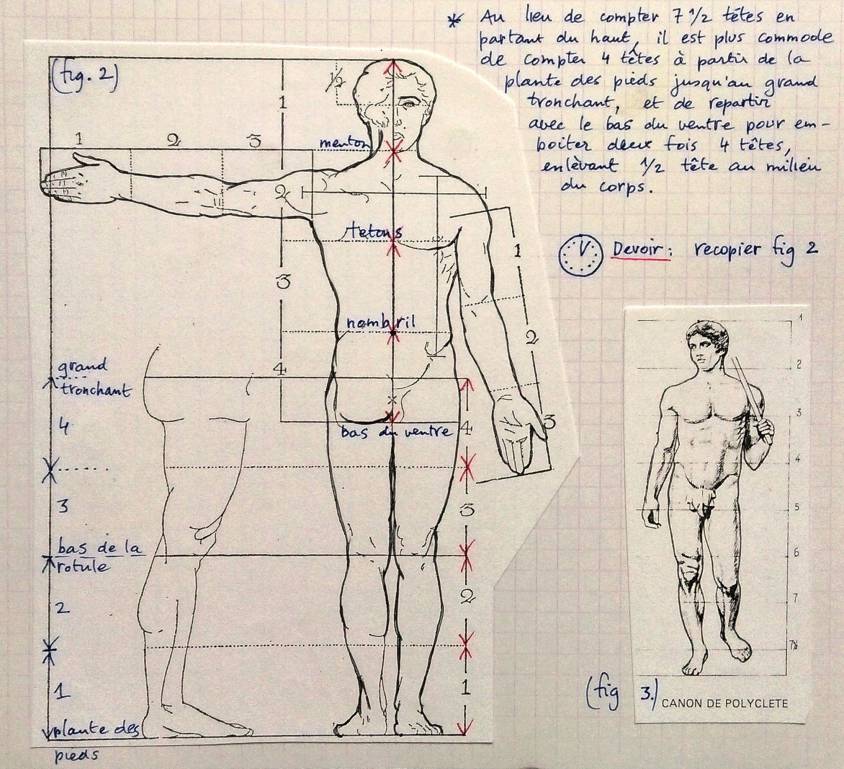
If one subdivides the overall 7.5 proportion, for an adult, from the top of the head till the lowest part of the torso, one measures four heads, one till the nipples, one till the belly button and a fourth one till the lowest part of the pubis. Going up from the sole till the middle of the pelvis, one measures 3.5 heads: 2 heads till the knee and 1.5 till the middle of the pelvis. That brings the total till 7.5 heads for the entire length of the adult human body and it is proportional in the sense that people with smaller heads also have small bodies.
Polikleitos versus Lysippus
In the Vth Century BC, the Greek sculptor Polikleitos’ spear bearer (The “Doryphoros”) of Naples National Archeological Museum applied this most beautiful canon of proportions, known as the “Polikleitos canon”.
During the Renaissance, the nostalgics of the Roman Empire preferred another Greek canon, that of Greek sculptor Lysippus (4th Century BC), formalized by the Roman author, architect and civil engineer, Vitrivius (1st century BC).
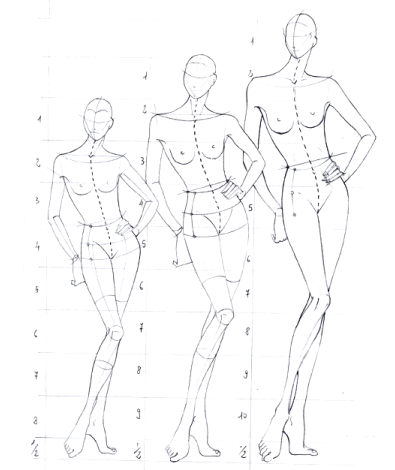
Vitruvius only transcribed the prevalent taste of his epoch. Roman sculptors, in order to give an athletic and heroic look to the Emperors which they were portraying, adopting the canon of Lysippus, could reduce the head of their models to only an eight of the total length of the body. The trick was that by reducing the relative size of the head, the body looked more preeminent and powerful, something most emperors, who were often physical failures, appreciated and secured their popularity. Even extreme cases of 12 to 15 heads of body length appeared. In short, Public relations ruled at the detriment of science and truth.
Today’s comic strip drawers chose proportions according to purpose:
–For real life, 7.5 or “normal canon”
–For a movie star, 8 heads, with the “idealistic canon”;
–For a fashion magazine: 8.5 heads;
–For a comic book hero: 9 heads for the “heroic canon”
Vitruvian man

Text accompanying Leonardo DaVinci’s Vitruvian Man:
Vitruvius, the architect, says in his work on architecture that the measurements of the human body are distributed by Nature as follows that is that 4 fingers make 1 palm, and 4 palms make 1 foot, 6 palms make 1 cubit; 4 cubits make a man’s height. And 4 cubits make one pace and 24 palms make a man; and these measures he used in his buildings. If you open your legs so much as to decrease your height 1/14 and spread and raise your arms till your middle fingers touch the level of the top of your head you must know that the centre of the outspread limbs will be in the navel and the space between the legs will be an equilateral triangle.
The length of a man’s outspread arms is equal to his height.
From the roots of the hair to the bottom of the chin is the tenth of a man’s height; from the bottom of the chin to the top of his head is one eighth of his height; from the top of the breast to the top of his head will be one sixth of a man. From the top of the breast to the roots of the hair will be the seventh part of the whole man. From the nipples to the top of the head will be the fourth part of a man. The greatest width of the shoulders contains in itself the fourth part of the man. From the elbow to the tip of the hand will be the fifth part of a man; and from the elbow to the angle of the armpit will be the eighth part of the man. The whole hand will be the tenth part of the man; the beginning of the genitals marks the middle of the man. The foot is the seventh part of the man. From the sole of the foot to below the knee will be the fourth part of the man. From below the knee to the beginning of the genitals will be the fourth part of the man. The distance from the bottom of the chin to the nose and from the roots of the hair to the eyebrows is, in each case the same, and like the ear, a third of the face.
Of course, Da Vinci’s exploration of the Vitruvian man doesn’t mean he approves or disapproves the stated fakery in proportions.
Soul or muscle?
It should be known that in Italy, the pure Roman taste has become trendy again following the discovery in 1506 of the statue of the Laocoon on the site of Nero’s villa in Rome. From that moment, artist will feel obliged to increase the volume of the muscular masses in order to appear as working « in Antique style ».
Although Leonardo never openly criticized this trend, it is hard not to think of Michelangelo’s frescoes in the Sistine Chapel, when the artist, seeking to raise the spirit to unequalled philosophical heights, advised painters: « do not give all the muscles of the figures an exaggerated volume » and « if you act differently, it is more a sort of representation of a sack of nuts that you will have achieved than to that of a human figure » (Codex Madrid II, 128r).
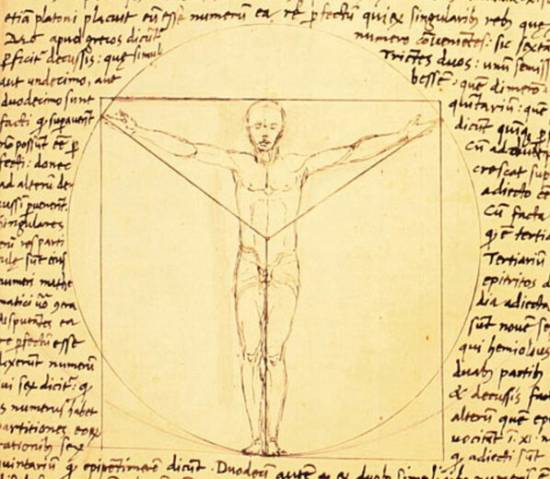
No doubt inspired by his friend, the architect Giacomo Andrea, in « The Vitruvian Man », Leonardo is above all interested by other harmonies: if a person extends his arms in a direction parallel to the ground, one obtains the same length as one’s entire height. This equality is inscribed by Leonardo in a square (symbol of the earthly realm). But if one stretches his arms and legs in a star shape, they are inscribed in a circle whose center is the navel. The location of the navel divides the body according to the golden ratio (in this example 5 heads out of a total of 8 heads, 5+3 being part of the Fibonnacci series: 1+2 = 3; 3+2 = 5; 5+3 = 8; 8+5 = 13; 13+8 = 21, etc.).
Leonardo clearly understood what the golden section really means: not a “magical” number in itself, but the reflexion of the dynamic of least action, the very principle uniting man (the square) with the creator and the universe (the circle).
So if you take a look, beware of what you see and especially what you don’t !
How neo-Platonism gave Plato a bad name

EN version pdf: How Neo-Platonism gave Plato a bad name

